[Notification] System Maintenance Notice Date: Monday, October 28, 2024, 6AM - 8AM (HST) / 9AM - 11AM (PDT) / 4PM - 6PM (UTC) Access to the website, including your My Page and all activity pages, will be temporarily unavailable during the times listed above. We apologize for any inconvenience and appreciate your understanding. *Please note that the maintenance time may vary.

Call our local Hawaii specialists for any questions about our island tours and activities
Read the Frequently Asked Questions or send us an inquiry
- Support Center
- Groups & Private Charters

WELCOME GUEST
Register and enjoy smoother booking, as well as being able to save your wish list and recently viewed activities.
Already a member? Please sign in

- Mauna Kea Summit Adventures & Stars (3)
What to expect
Traveler's photos, activity provider, payment / cancellation policy, mauna kea summit adventures sunset & stargazing guided tour with transportation.
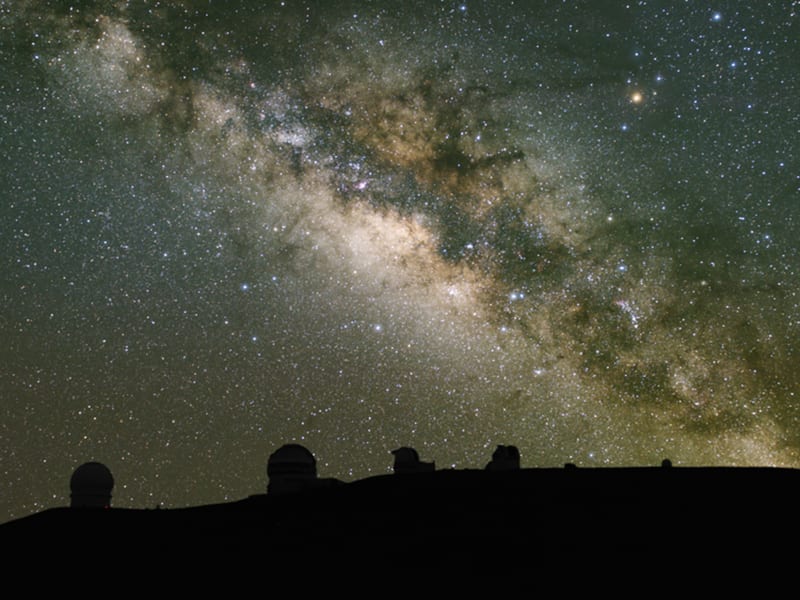
Way better than expected!
Our driver was 95 out of 100, 4.5 - 8.5 hour(s) incl. transportation, available daily, pick-up available, not accessible.
- Sunset at the summit: The most dramatic spectacle in Hawaii!
- Guided stargazing with lasers and Celestron telescope at the Visitor Information Station
- Duration: 7.5-8.5 hours
- Pick-up Available from Kona Crossroads Shopping Center, The Queens Market Place, Saddle Road Junction (between Hwy 190 and 200) or Maunakea Recreation area
- Dinner Package: Dinner includes a hearty portion of 3-cheese vegetable lasagna. Gourmet hot cocoa, coffee, and teas accompanied with biscotti while stargazing
Mauna Kea Sunset & Stargazing Tour with Dinner
Price per Adult/Child :
Mauna Kea Sunset & Stargazing Tour (Dinner not included)
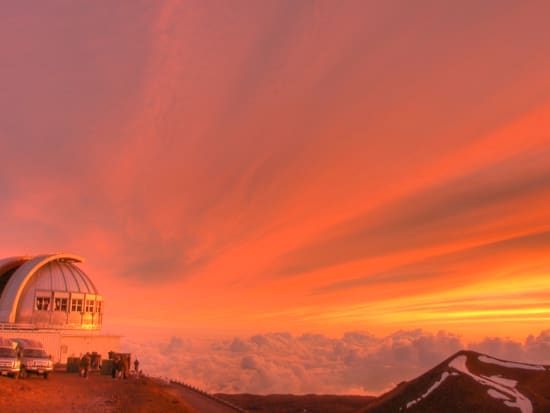
Pick-up from Kailua-Kona & Waikoloa
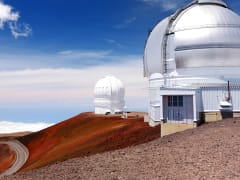
Before sunset, stop at the Mauna Kea Visitor Center. Here you can see 3D models of the summit observatories, watch videos about Mauna Kea and the astronomical research going on at the summit, and look through a solar telescope.
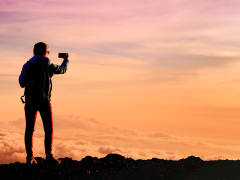
Upon arrival at the summit your guides will provide a short presentation on the Mauna Kea observatories. Then you'll have approximately 20 minutes before and after the sunset to take in the panoramic views and walk around the giant telescopes.
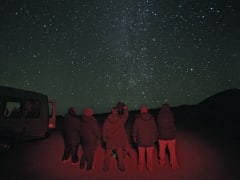
After sunset, head back down to VIS for a stunning stargazing experience! Warm up with a hot beverage and watch as the guides use lasers to point out constellations and planets, then look through a Celestron telescope for a closer view.
Transportation add-ons
Pick-up/check-in time & location.
Drop-off/Check-out Time & Location
15:15-16:45
- Oceanside parking lot by Denny's (look for Mauna Kea Summit Adventures parking signs)
- Lower Dirt Parking Lot
- Starbucks Coffee Shop
- In front of Kohala Coffee Co.
Location, direction and description
- Pick-up times will vary from day to day depending on the location of the pick-up of and sunset times. Please be at your pick-up location 10 minutes prior to your scheduled pick-up time. Parking Information: Kona Crossroads Shopping Center: As you enter the parking lot, you will see the Domino’s Pizza and AutoZone store fronts to the right-hand (mountainside) of the shopping center, and a Denny’s restaurant on the left-hand (oceanside) of the shopping center. Please park your vehicle on the left-hand (oceanside) of this shopping center, and look for parking signs with the Mauna Kea Summit Adventures company logo on them. Queens Marketplace: Please park on the back (south) side of the mall. The pick-up is directly in front of the Starbucks Coffee store. Island Lava Java Waikoloa: The pick-up is directly in front of the Island Lava Java Waikoloa at the Waikoloa Highlands Center. Please do not leave valuables in your car.
- Guests meeting the tour at the Maunakea Visitor Information Station must be sure to park in the designated Lower Dirt Parking Lot located approximately 100 yards below the visitors center. Once you park, look for a bronze-colored 14-passenger 4WD vans that say Mauna Kea Summit Adventures on the side. The van will be park in the paved parking lot above your designated parking area. Mauna_Kea_Visitors_Center.pdf
22:00-23:30
21:00-22:30, 21:30-23:00.
- Return times will vary depending on the time of sunset and the drop-off location.
Important activity information
Restrictions.
- Guests who are pregnant are not permitted to participate in this activity.
- People 13 years old and above can participate in this activity.
- Participants may not scuba dive within 24 hours of this activity due to the risk of decompression sickness.
- Guests with a BMI (Body Mass Index) of 40 or over should not make this trip.
- Participants with any history of a respiratory problems (this includes pneumonia in the last 6 months, any lung conditions or surgeries) are not permitted to take this tour. Contact your physician if you have questions about traveling to this altitude.
- Participants with any history of heart problems (this includes ANY heart surgery, stent, pacemaker, heart valve irregularities etc.) are not permitted to take this tour. Contact your physician if you have questions about traveling to this altitude.
- Wheelchair Accessibility: Tour vehicle is not equipped with a lift. Must be able to get into the van with assistance, storage available for collapsible wheelchairs. Please indicate during booking for most convenient arrangements.
- This activity is not wheelchair accessible.
Other requirements
- Please call the activity provider the day before to reconfirm your booking. Your voucher has the necessary contact information listed.
Booking requirements (# of participants, vehicles, hours, etc.)
- You can book a maximum of 8.
Required items to bring & attire
- Closed toe shoes
- The average temperature on top of Mauna Kea is 30°F and wind is common. Please wear long pants and closed toed shoes and bring any layering garments you may have.
- Warm gloves
Additional notes
- The activity schedule is subject to change or cancellation due to weather or traffic conditions.
- The menu is subject to change without notice.
- Road closures due to high winds near the summit may happen in the winter. If a road closure is discovered en route a shorter version of the tour will continue and guests will receive a partial refund. If a road closure is discovered before departure, guests will be contacted and given the option to cancel at no charge or receive a partial refund and still participate on an shorter tour. If you cannot be reached, your booking will be canceled and you will be given a full refund.
- Beverages and snacks are available for purchase at Mauna Kea Visitor Center, and you are also welcome to bring your own non-alcoholic beverages if you wish.
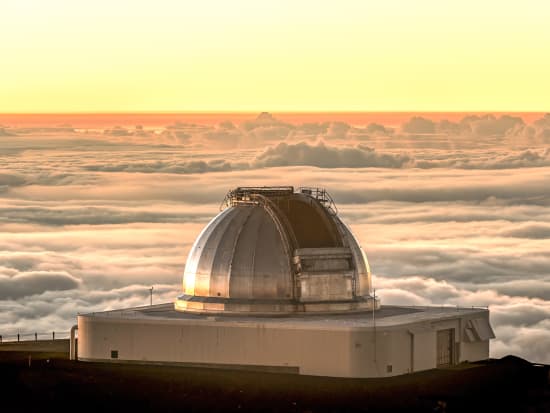
Travelers interested in this activity also viewed

Overall rating
Our guide was a local, born and raised, and very knowledgeable about everything! He was entertaining, friendly, and went out of his way to make it special for us! Highly recommend!
It was our 2nd time at the summit after 14 years with your company and we were more concerned about the summit weather due to last time it was so windy and cold to stay outside of the car. But, the weather this time t ... hanks to god it was good to watch the sunset. Our driver was so nice was caring, professional skill of guiding and a gentleman. He was caring everyone. This made our trip OUTSTANDING. I would recommend this trip to anyone eligible it is good tour with a Mercedes 4WD van with 14 passengers.
God’s amazing creativity seen through volcanic activity and celestial bodies. Truly an experience you won’t forget. Maka was the best. Very knowledgeable and friendly. Be forewarned that if you have altitude problems, y ... ou may fell icky at the summit. Take it slowly. You’ll fell better when you descend.
Activity Provider Mauna Kea Summit Adventures (Paradise Safaris)
- Credit card payment

- Any cancellations made after 15:00, 2 business days prior to the activity will be subject to a charge of 100% of the total amount. (Parties of 4 or less) Any cancellations made after 15:00, 3 business days prior to the activity will be subject to a charge of 100% of the total amount. (Parties of 5 or more) Any cancellations made after 15:00, 1 week prior to the activity will be subject to a charge of 100% of the total amount. (Parties of 8-10) Any cancellations made after 15:00, 2 weeks prior to the activity will be subject to a charge of 100% of the total amount. (Parties of 11 or more)
Payment Methods

Cancellation Policy
What will we see on this tour.
While driving up Saddle Road you'll have panoramic views of Mauna Kea and Mauna Loa. Along the road you'll see black lava rock formed by Mauna Loa's eruptions in the last two hundred years. From the Mauna Kea Access Road you'll see many volcanic cones that once spewed lava. You will also get to watch the sunset over these volcanic slopes. At the summit you will see thirteen telescopes that make up the Mauna Kea Observatories (the observatories are closed to the public but you might get to see the domes open after sunset). At the Onizuka Visitor Information Station you will get to look through a solar telescope, watch a video about Mauna Kea and the observatory, and after sunset this is where the stargazing magic happens. The guide will operate a computerized Celestron telescope through which you can see stars, planets, distant galaxies, and the moon.
Will we get to look through the big telescopes on Mauna Kea?
No, the observatories have very limited public access. However, you might get to see the domes open after sunset.
Will there be any health risks linked to going up Mauna Kea?
Mauna Kea has 40% less oxygen than sea level and 40% less air pressure. This drop of vital oxygen can cause serious problems for persons with heart or lung issues, children, and women who are pregnant. Visitors in good health are also susceptible to altitude sickness and should use caution and abide by all rules and regulations of the tour. Next to having a good time, safety is the number one priority.
What type of vehicle will be used?
Built for comfort, the 14 passenger 4v4 Van Terra micro-coaches are equipped with air conditioning, stereo sound, PA, phone, first aid and oxygen, parkas, and a telescope. Each van can hold up to 14 people.
Will we be guaranteed to see stars?
Mauna Kea enjoys an average of 325 clear nights per year. Most of the inclement nights are easily predictable. The weather is monitored on a daily basis and if poor scenic conditions are likely, the trip will be cancelled and a full refund given (or reschedule if available). Like any high mountain there can be unpredictable and fast changing weather at any time.
What kind of equipment will be used?
Your guides will provide you with new Celestron CPC 1100 telescopes that are equipped with Starbright XL coatings for 10% more light throughput than ordinary instruments. These scopes are computer automated and have spectacular optics. Because they are bigger and have better optics they gather about 100% more light than telescopes used on other tours.
What jackets sizes are available?
The jackets sizes are as follows: Small ~145 lbs and under / ~63.5 kg Medium 140~175 lbs / ~77 kg Large 170~210 lbs / ~90.5 kg XL 200~260 lbs / ~ 113 kg
How far in advance should I book this activity?
We recommend booking at least 3 weeks in advance. If you have very specific schedule requirements and are not flexible, please book sooner. Last-minute bookings are often possible, but availability is limited.
How cold does it get on Mauna Kea?
Average temperatures can reach 32° Fahrenheit or 0° Celsius.
Please visit VELTRA Support page to send an inquiry about this activity.
Top-Rated Activities for Big Island

Legends of Hawaii Luau Dinner Show with Open Bar at Hilton Waikoloa Village
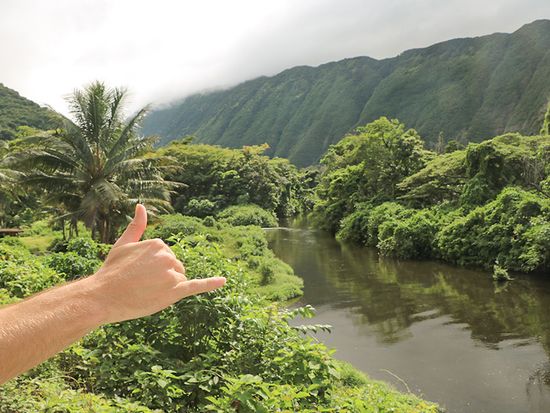
Waipio Shuttle - An Exceptional Guided Sightseeing Tour of Waipio Valley
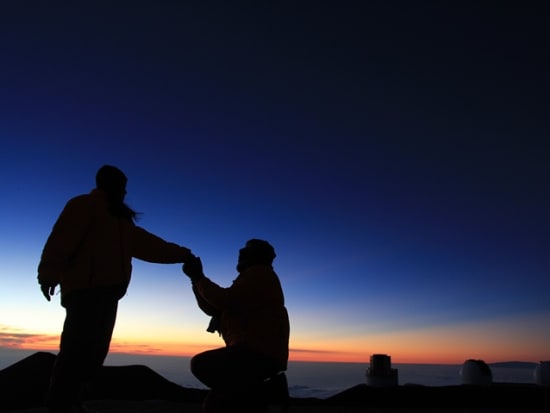
Mauna Kea Summit Sunset & Stargazing Tour with Meal, Transportation & Guide
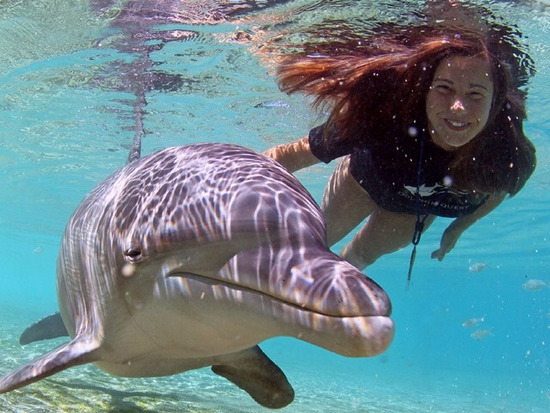
Dolphin Quest Hawaii - Dolphin Swim & Encounter at Hilton Waikoloa Village
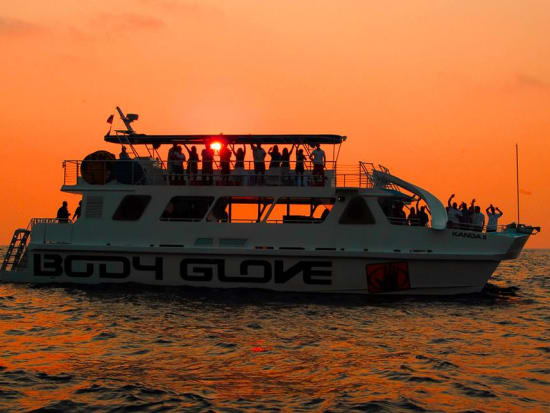
Kona Sunset Dinner Cruise to Kealakekua Bay with Live Entertainment | Body Glove
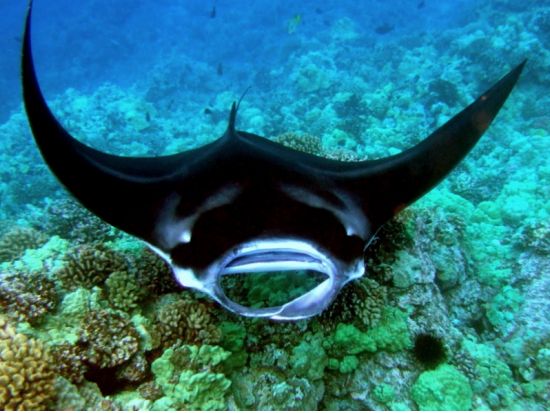
Hawaii Manta Ray Sunset & Night Time Snorkel Experience from Kona - Iruka

Island Breeze Big Island Kona Luau at King Kamehameha Hotel with Open Bar
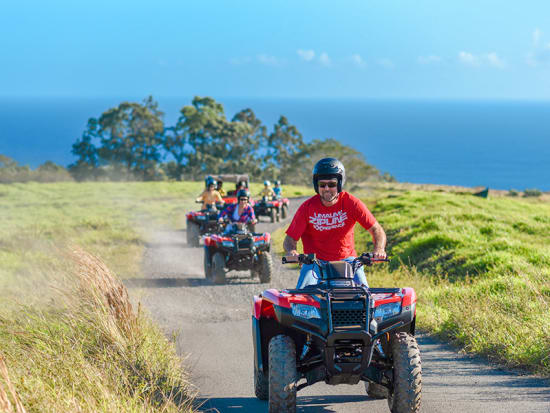
Deluxe Big Island ATV Tour & Waterfall Swim at Umauma Falls
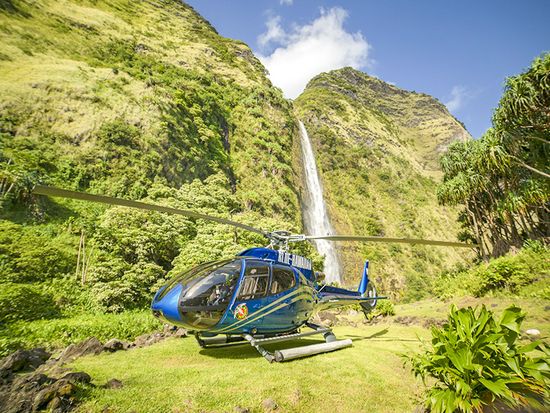
Big Island Spectacular Circle Island Helicopter Flight with Landing Option
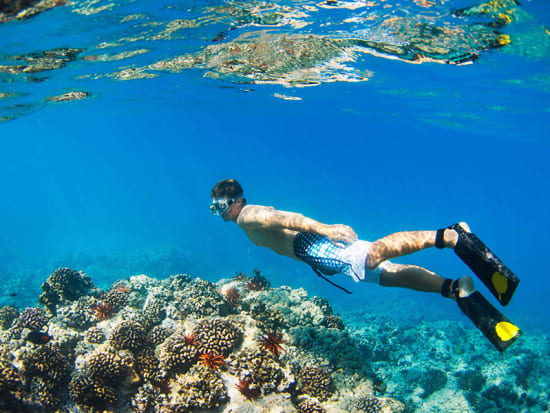
Ocean Sports Kohala Coast Snorkel Cruise with Lunch and Open Bar

Volcanoes National Park & Rainbow Falls Tour from Hilo and Cruise Ship Pier
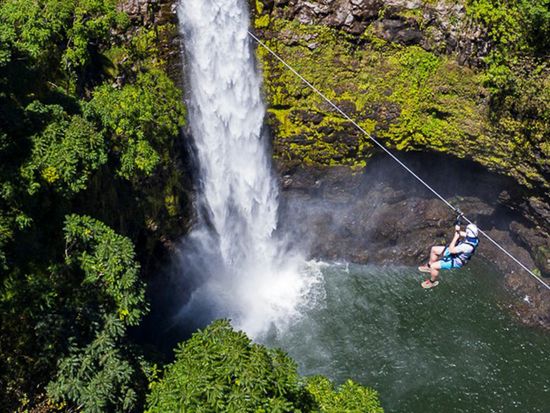
Hawaii Zipline Tours - Big Island Waterfall & Rainforest Zip Adventure

Kailua-Kona Sunset Cocktail with Free Drinks - Honi Olani Catamaran
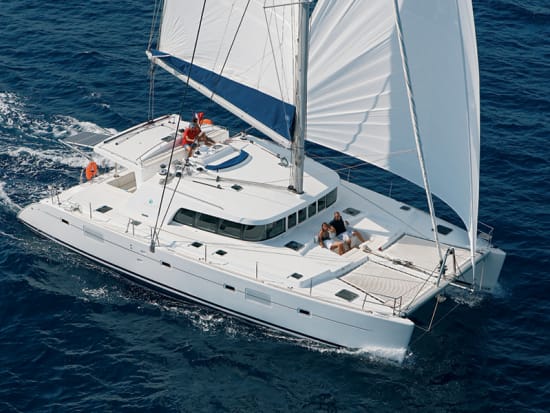
Luxury Private Boat Charters from Kona - Daytime & Sunset Cruises aboard No Wiki
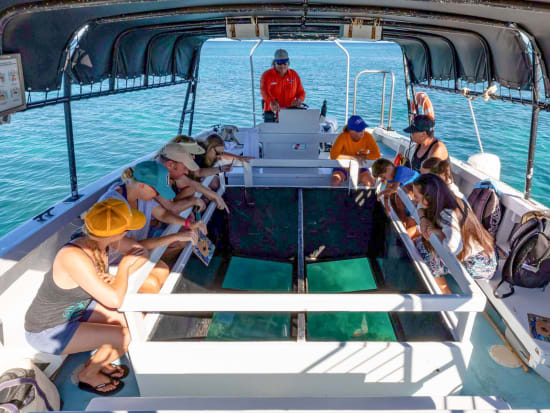
Hawaii Glass Bottom Boat Scenic Cruise from Waikoloa | Kids 0-5 Ride for Free
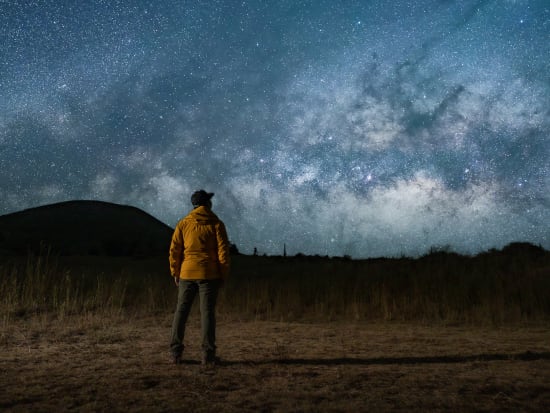
Mauna Kea Stargazing Tour Experience with Free Professional Photos - Epic Tours

Spirit of Aloha Waikoloa Sunset Cruise with FREE Cocktails - Hawaii Nautical
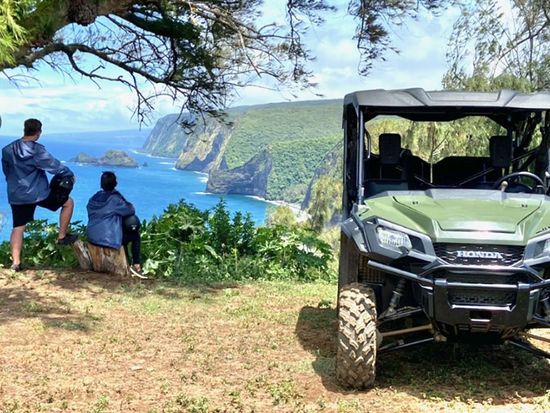
Hawaii ATV Ride Tour at Kohala Coast - Sea to Mountain Off-Road Adventure
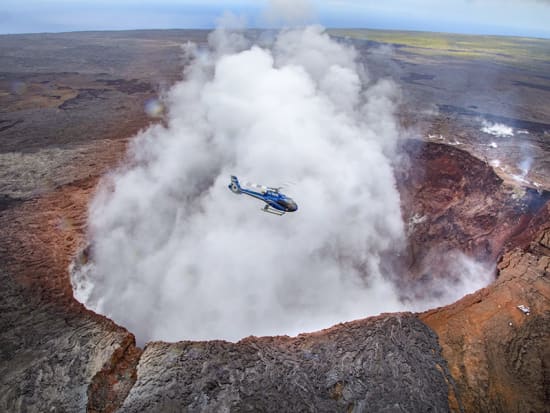
Blue Hawaiian Helicopters Discover Hilo Tour - Volcanic Landscapes & Waterfalls
Editor's picks for big island.
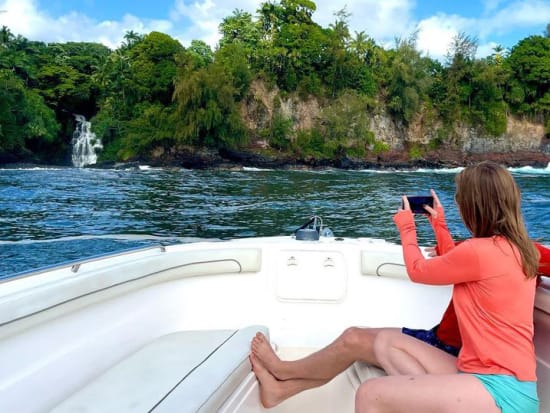
Check Out our Newly Added Tours & Activities on Big Island
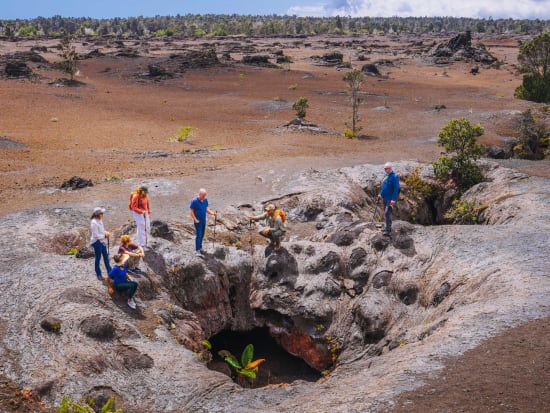
Bucket List - Top 20 Things You MUST Do on Big Island!
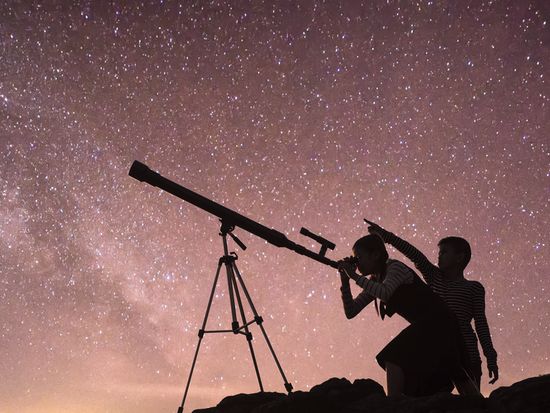
Best Hawaii Stargazing Tours
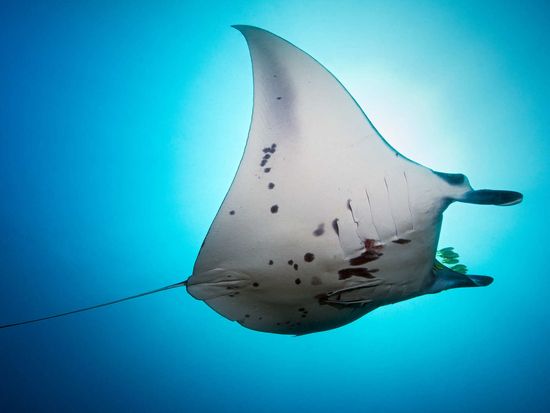
Get up close with the Mantas! Hawaii Top Manta Encounters
Top 7 big island of hawaii air & helicopter tours.

Big Island's Top Outdoor Adventures for Thrill Seekers
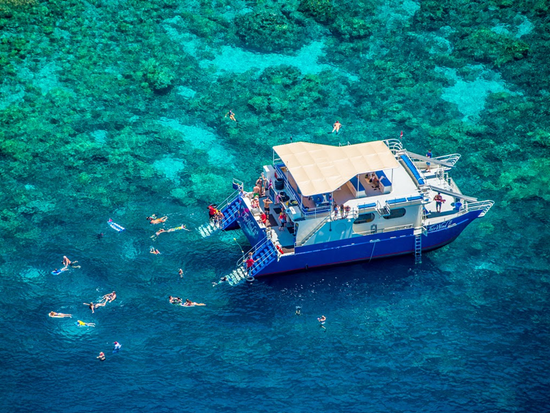
Best Snorkel Tours Big Island
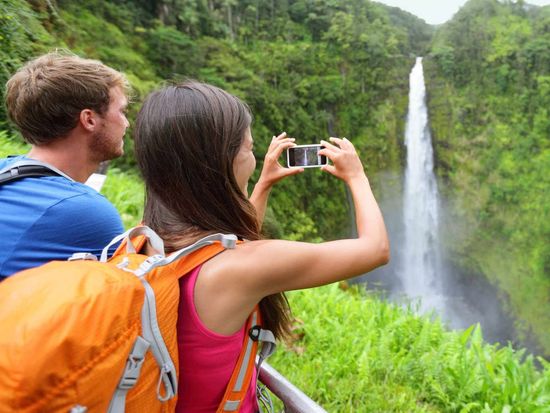
Hidden Gems & Hawaii Top Unique Experiences
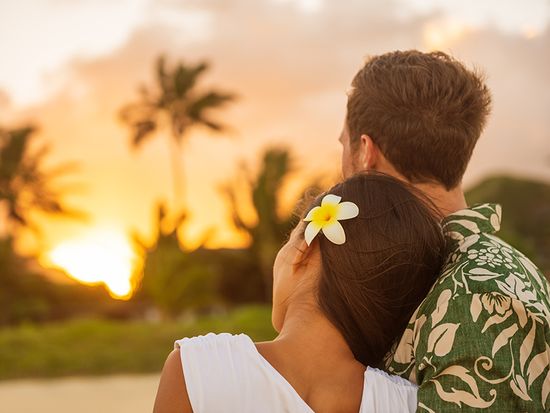
Romantic Things to Do on Big Island
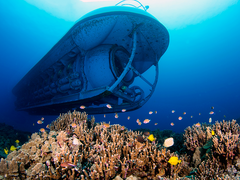
Best Family-Friendly Activities on the Big Island

Best Hawaii Local Coffee Farm & Wineries Tours
Mauna kea summit adventures & stars other tours and activities, mauna kea summit sunset & stargazing tour with meal, transportation & guide, mauna kea summit sunset & stargazing tour with dinner - hawaii forest & trail, 日本語ガイド&オムレツ昼食付き, eur 152.00~.
You can only add up to 10 items in the list.
Please reduce items in the list.
- STEP 3 Book another activity, and use the coupon for a discount!
- Valid for one (1) booking per account during the designated promotional period.
- Cannot be used on the same activity on the same date and time as the first activity, or applied to activities that have already been booked.
- Hawaii Activities
- VELTRA Corporation
- Investor Relations
- News Release
- Supplier Sign-in
- Add Your Activity
- Travel Agent
- Affiliate Program
- Social Media Influencer
- Privacy Policy
- Terms & Conditions
- Hawaii Travel Guide
- Military & Kamaaina
- Groups & Private Charters


A .gov website belongs to an official government organization in the United States.
A lock ( ) or https:// means you’ve safely connected to the .gov website. Share sensitive information only on official, secure websites.

Measurements at the Mauna Loa Observatory stopped after the 2022 eruption of the Mauna Loa volcano, when lava flow crossed the access road and took out power lines to the facility. The observatory remains inaccessible by vehicle and without power from the local utility company.
Observatory staff has established limited solar power in four observatory buildings and restored approximately 33 percent of the measurements onsite, including the Global Monitoring Laboratory and Scripps critical CO 2 records and other atmospheric measurements. temporary measurement site at the nearby Mauna Kea volcano for the critical CO 2 record and other atmospheric measurements taken at the observatory. -->
Media can contact: Theo Stein (303) 819-7409 ([email protected]) or Karin Vergoth 303-632-6413 ([email protected])

Mauna Loa Observatory (MLO) is located on the north flank of Mauna Loa Volcano, on the Big Island of Hawaii, at an elevation of 3397 meters, or 11,135 feet above sea level. The observatory is a premier atmospheric research facility that has been continuously monitoring and collecting data related to atmospheric change since the 1950's.
The observatory protrudes through the strong marine temperature inversion layer present in the region, which separates the more polluted lower portions of the atmosphere from the much cleaner free troposphere. The undisturbed air, remote location, and minimal influences of vegetation and human activity at MLO are ideal for monitoring constituents in the atmosphere that can cause climate change.
MLO has supported hundreds of cooperative research programs with national and international universities and government organizations. A staff of 8 operates and maintains the observatory, with offices in Hilo, Hawaii.
Movies showing the lava flow crossing the road to the observatory: Lava Flow Movies
If you are interested in conducting research at one of the NOAA Baseline Observatories: Request a New Baseline Observatory Cooperative Agreement

- Latitude: 19.5362° North
- Longitude: 155.5763° West
- Elevation: 3397.00 masl
- Time Zone: Local Time + 10 hour(s) = UTC
- Contact Name: Darryl Kuniyuki
- Address: NOAA - Mauna Loa Observatory 1437 Kilauea Ave. #102 Hilo, Hawaii, 96720, United States
- Phone: (808) 933-6965
- Fax: (808) 933-6967
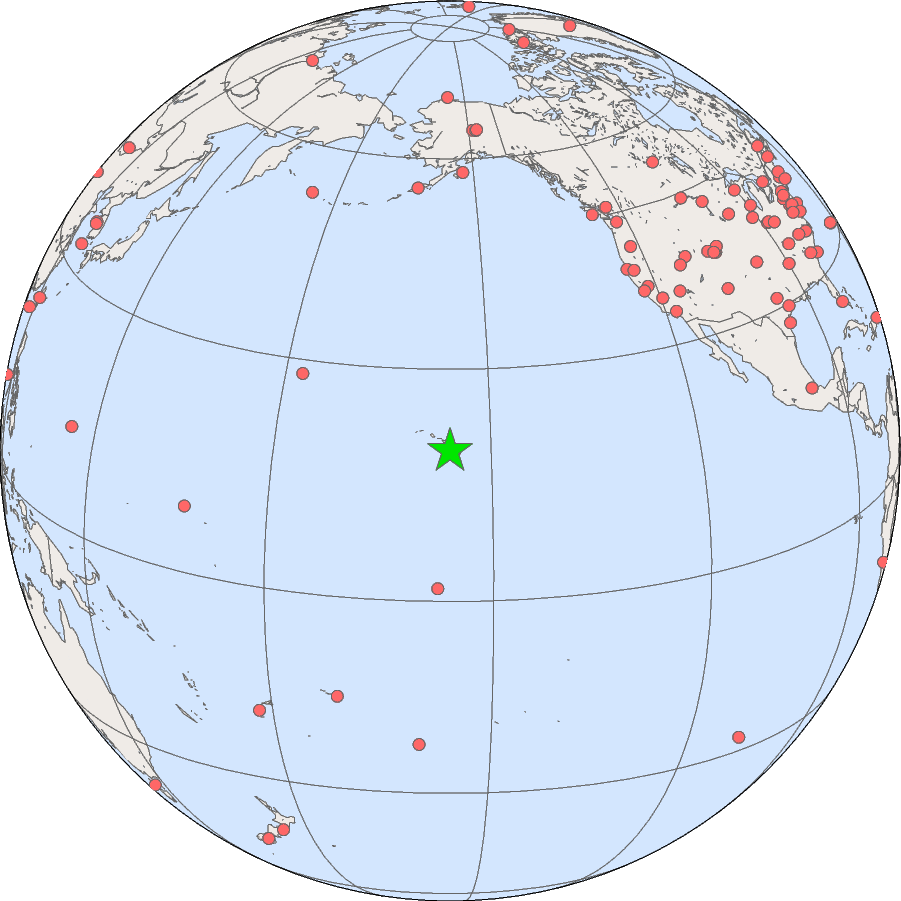
🪐 The 5 Best Mauna Kea Stargazing Summit Tours [2024 Reviews]
Mauna Kea is a massive dormant volcano with a peak sitting at over 4,000 meters above sea level which makes it the highest point in all of Hawaii and the second-highest peak of an island on the entire planet.
Considered a shrine for worship and as a “home to the gods”, it is very important to Hawaiians, and its preservation is taken very seriously. Thanks to the extremely dry environment about it, it’s extremely clear and offers unmatchable views of the stars from the summit.
The best way to take advantage of this phenomenon is by going on a tour! We have all the best stargazing summit tours at Mauna Kea right here for you, so don’t go anywhere!
Be sure to see our reviews of Big Island helicopter tours , Big Island volcano tours and Big Island snorkel tours .
Best Mauna Kea Stargazing Summit Tours
Quick answer: the 5 best stargazing summit tours at mauna kea.
- Best Value Tour: Mauna Kea Summit Sunset and Stargazing Tour
- Best Family Tour: Mauna Kea Stargazing Experience + Photos
- Best Full Day Tour: Best Mauna Kea Summit Tour (Free sunset and star photo!)
- Best Sightseeing Tour: Maunakea Stellar Explorer From HILO
- Best Small Group Tour: Mauna Kea Summit and Stars Small-Group Adventure Tour
Mauna Kea Stargazing Summit Tour Reviews
1. best value tour: mauna kea summit sunset and stargazing tour.
- Duration: 7.5 to 8 hours
- Departure: Hotel pickup and drop-off available
- Departure Time: 4:00 PM
- Includes: Pickup and drop-off (select locations), s nacks and hot chocolate, f ree DSLR night photos (sent via email), p arkas, g loves
Hawaii is a place full of natural beauty that never stops surprising or impressing us. It’s one of those states that no matter how much you visit, there’s always something to wonder at. With the Mauna Kea Summit Sunset and Stargazing Tour , you’re sure to be blown away by the entire experience.
This 7-hour tour starts off by you being picked up at your hotel, so there’s no need to deal with organizing transportation to another meetup point.
Make sure you bring comfortable clothes, and long pants that are flexible enough to move in easily. Due to the high elevation, the temperatures can drop to below freezing!
You’ll all start heading up to the summit, as your guide tells you about the importance of this magical place. They’ll speak about its relevance and cultural significance throughout history, as well as present-day.
They do offer a warm parka, gloves, and a hot drink as well so you stay comfy and never too chilly.
Expand To See More See Less
Once you arrive to the top of the volcano, you’ll be able to really settle in and appreciate this incredible view.
Here, you’ll find the world’s largest collection of research telescopes, along with 2 of those that took the first photo of a black hole! Everyone will get to use a Celestron telescope to check out the amazing star views! Enjoy some hot chocolate and snacks as you watch the celestial wonders above you.
You’ll surely want to commemorate this moment, and what a better way than to have photos taken of you by a professional DSLR camera? The photos will be emailed to you afterward, displaying you against the starry sky!
More Information & Tour Booking
100% refund for cancellations within 24 hours of tour experience, other experiences you may enjoy:, 2. best family tour: mauna kea stargazing experience + photos.
- Duration: 2 hours
- Departure: Mauna Kea Forest Reserve , 44-5400 Daniel K. Inouye Hwy, Waimea
- Departure Time: 9:30 PM
- Includes: All activities, professional photographer guide, parka jackets, complimentary medium resolution photos
Perhaps you like the idea of going to check out the magnificent luminous sky from the Mauna Kea summit, but don’t want to spend that much time up there. Maybe you have a packed schedule that won’t allow for it?
If so, we highly recommend the Mauna Kea Stargazing Experience + Photos that lasts 2 hours. You’ll start off by meeting up with your guide, where they’ll tell you about the area and what to expect.
This is a tour that’s recommended for people who have a moderate physical fitness level, and we highly recommend bringing warm clothing that you can comfortably “work out” in.
While they will provide you with warm parka jackets, it’s always best if you have something you know fits you well. Your guide will select a route depending on the weather conditions, that will offer you the best views possible.
You’ll be accompanied by an Analog-Astronaut and professional photographer guide who knows this area like the back of their hand.
Not only that, but they’ll tell you all about the galaxies, stars, and constellations in the sky. With a small group size maxing out at 12 travelers, you can ask them any questions you have.
We found the guide to be incredibly patient and knowledgeable, offering so much interesting historical information about the cultural relevance, geology, and the history of the volcano. There are blankets so you can lay on the ground and look up at the sky without craning your neck for a couple of hours.
The guide also takes incredible photos of you with the starry skies in the background, which turn out like some sort of masterpiece! Afterward, they’ll send you the photos via email later on so you can have them framed or share on social media.
3. Best Full Day Tour: Best Mauna Kea Summit Tour (Free sunset and star photo!)
- Duration: 8 hours
- Departure: Variety of locations available
- Departure Time: 2:15 PM
- Includes: Dinner, bottled water, snow parka, ski pants, gloves, admission fee for Mauna Kea 4×4 passenger van, expert tour guide, DSLR camera photo, astronomical telescope
Next up, we bring you yet another highly-rated, 8-hour tour to the top of Mauna Kea. This is one of the most mind-blowing places to see the stars in the entire world, and for the best views we highly recommend checking out the Best Mauna Kea Summit Tour !
With complimentary sunset and star photos taken by your professional guide, you’ll have something to share with everyone else as well! The tour will pick you and the rest of your group up from the Target in Kona, though the time will vary depending on which time of year you go.
As you travel towards Mauna Kea, your guide will get acquainted with everyone and begin telling you some interesting facts about the volcano and how it is considered a holy place of worship.
Make sure you bring warm clothes that you can hike in, as well as comfortable shoes with a good grip/tread on them so you can more efficiently climb up the volcano.
Make a much-welcomed stop at the Onizuka Astronomy Complex, where you’ll check out their Visitor Center at an altitude of 9,000 feet. This is also crucial, to help everyone get acclimated to the altitude.
At this point, you’ll start to notice it getting a bit colder, so you can change into your warmer clothes. The gift shop here has some pretty cool stuff, so make sure to see their offerings, as well! If everyone would like, you can have an early dinner here and make sure to hydrate.
Next continue on your hike to the Mauna Kea summit, at an altitude of an impressive 13,796 feet! Here, you’ll see the beautiful observatory where you can explore, and see the sunset from one of the highest peaks in the world.
After the sun goes down, start gazing at the stars with their refractor telescope and razor pointer. The guide does an amazing job of explaining the constellations, planets, and stars that you will witness here.
They’ll also take marvelous photos of you with a professional camera, emailing these beautiful snaps afterwards.
4. Best Sightseeing Tour: Maunakea Stellar Explorer From HILO
- Duration: 7 hours
- Departure: 93 Banyan Dr, Hilo
- Departure Time: 3:30 pm
- Includes: Bottled water, professional guide, hotel pickup and drop-off, coffee and/or tea, dinner
While Hawaii has a ton of fascinating places to offer on land, it also has prime stargazing to admire! The Maunakea Stellar Explorer HILO is a 7-hour tour that will take you through beautiful water phenomenons, lava tubes, volcano summits, and much more!
If you want an action-packed Hawaiian adventure that encompasses a ton of different fascinating places this is it! We loved that this tour includes a complimentary hotel pickup so you don’t have to plan extra time and budget to get to your meetup spot.
Transportation is comfortable and climate-controlled so you don’t have to worry about being too cold or hot and humid. Start off in the charming little Hilo town, where your guide will start telling you all about the area and the stunning Rainbow Falls.
This famous waterfall looks like something from a storybook! The twin waterfall system stands at a whopping 80 feet tall, and if the time is right you’ll get to see the rainbow around them!
Head up the Wailuku River – the second-largest river in Hawaii. The route along here is gorgeous, and is anything but boring. Also known as Pe’epe’e Falls, you’ll eventually come across the Boiling Pots river feature.
Shaped by erosion and lava formations over time, it creates a pool of turbulent water that looks like it’s boiling. You can grab some impressive photos here!
Next, you’ll see the Kaumana Caves which is a section of the enormous lava tube system that transported lava 1.5 miles from Hilo-town in the late 1800s! Go inside to experience the high, cathedral-like ceilings before resting to enjoy a picnic lunch on top of them!
As the sun starts to go down a bit, your guide will take you to one of the best locations on Mauna Kea for stargazing at night. This will depend on the weather conditions, and they’ll let you see the sky, stars, and planets through their large aperture Dobsonian telescope.
Then go across Saddle Road located between both Mauna Kea and Mauna Loa which are two of the biggest volcanoes on the planet. Your guide will offer a fascinating narration on the different lava flows, environment, and wildlife found here.
They’ll set up a top-notch telescope so you can watch vibrant solar flares, sunspots, and more!
5. Best Small Group Tour: Mauna Kea Summit and Stars Small-Group Adventure Tour
- Departure: Hotel pickup and drop-off
- Departure Time: Contact tour operator
- Includes: Guide, hooded parkas and gloves, hot picnic dinner, hot cocoa and cookies, private star show with telescope, local taxes
Sometimes bigger groups mean bigger fun, and this definitely holds true with the Mauna Kea Summit and Stars Small-Group Adventure Tour . While it says “small-group” in the title, they take up to 29 passengers, which is one of the biggest we’ve seen.
It offers camaraderie while seeing these incredible places and even a delicious picnic! The tour does offer hotel pickup, so all you have to do is meet them in your hotel lobby ready with some comfortable walking shoes and clothing!
Board the 4×4 luxury van and get settled in while your guide tells you and your group about the area’s history, geology, flora and fauna, and more. We found the van to be very smooth and with ample leg room, making it that much more pleasant.
You’ll first stop at the Maunakea Visitor Information Station, where you’ll learn about Mauna Kea and its significance throughout history. Then, enjoy a hot picnic dinner where you’ll chat further and just enjoy the view before heading to the summit.
Make sure you’re wearing warm clothes as you’re going to head up above the clouds, all the way to the Mauna Kea Summit! Once you arrive, you’ll all be able to take some time and relax! Enjoy a magnificent sunset from above the clouds while seeing the Pacific Ocean as well.
Once the sun sets, the group will travel to a lower elevation to keep everyone more comfortable. Here, they’ll share their 11” Celestron telescopes designed to see what seems like every star and planet in the sky!
FAQs About Star Gazing at Mauna Kea
Why is mauna kea so good for star gazing.
What makes Mauna Kea so special for star gazing is its location above the clouds. As you ascend the mountain you leave behind the layer of moisture and pollution that often plagues the lower elevations. The air is thin and dry which makes for crystal clear skies and breathtaking views of the stars.
The altitude is not the only thing that makes Mauna Kea such a perfect location for astronomers. Being in the middle of the Pacific Ocean means that thousands of miles from any sources of light pollution. The isolation combined with the thin and dry air means that the night sky above Mauna Kea is one a very dark sky with clear air that doesn’t block the starlight.
Speaking from personal experience, the stars up there are something else! It’s like someone took a giant brush and painted the night sky with thousands upon thousands of twinkling lights.
Mauna Kea has several observatories, the two most noteworthy are the Keck Observatory and the Subaru Telescope . The observatories can take advantage of the mountain’s location and conditions to study the universe in detail that is not available in many other locations.

Can I Look Through a Telescope at Mauna Kea?
Yes you can look through a telescope at Mauna Kea, however access to the telescopes is highly restricted and requires planning and reservations. The telescopes on Mauna Kea are owned by universities and research institutions and not open to the general public.
There are a few ways for stargazing and to observe the night sky on Mauna Kea. One option is to visit the Onizuka Center for International Astronomy Visitor Information Station , which is located at an elevation of approximately 9,200 feet.
The center offers guided stargazing programs and exhibits that provide information about the telescopes and research being conducted on Mauna Kea.
Your best option is to participate in a stargazing tour, which is as you can image is a very popular activity! There are several tour companies that offer stargazing tours on Mauna Kea, which include transportation to the summit and access to telescope.
See our favorite tours above!
These tours usually require reservations in well in advance and may have age restrictions or other requirements.
Can You Drive to the Mauna Kea Summit?
Yes you can drive to the Mauna Kea summit. The road up to the summit is unpaved and steep with switchbacks and sharp turns. Not to mention the terrain is rocky so you need to have a four-wheel drive vehicle and be prepared for challenging driving conditions.
You should also know the altitude can give many people altitude sickness. As you ascend the mountain the air gets thinner and some people may experience headaches, nausea or other symptoms of altitude sickness.
Be sure you know the restrictions and guidelines when driving to the Mauna Kea summit.
Will Car Rental Agencies Let You Take a Car to the Mauna Kea Summit?
Some car rental agencies on the Big Island of Hawaii allow their vehicles to be driven up to the Mauna Kea Visitor Information Station. You must check with the specific rental car agency you plan to use as many have restrictions or may not permit their vehicles to be driven up there.
The summit road is not paved so you need to have a four-wheel drive vehicle. If you do plan to drive a rental car to the Mauna Kea you need to check the rental agreement for any restrictions or additional fees that may apply. You may be required to buy additional insurance.
Tour Guides
The Sunset Stargazing Adventure at Mauna Kea Summit is our Editors Choice for the best stargazing summit tour at Mauna Kea
Robert Baker
Related articles, the 8 best maui snorkeling tours [2024 reviews], 🤿 the 7 best oahu snorkeling tours [2024 reviews], 🚁 the 7 best oahu helicopter rides [2024 reviews], top 15 things to do in maui.

Mauna Kea Stargazing: How to DIY and the 3 Best Tours
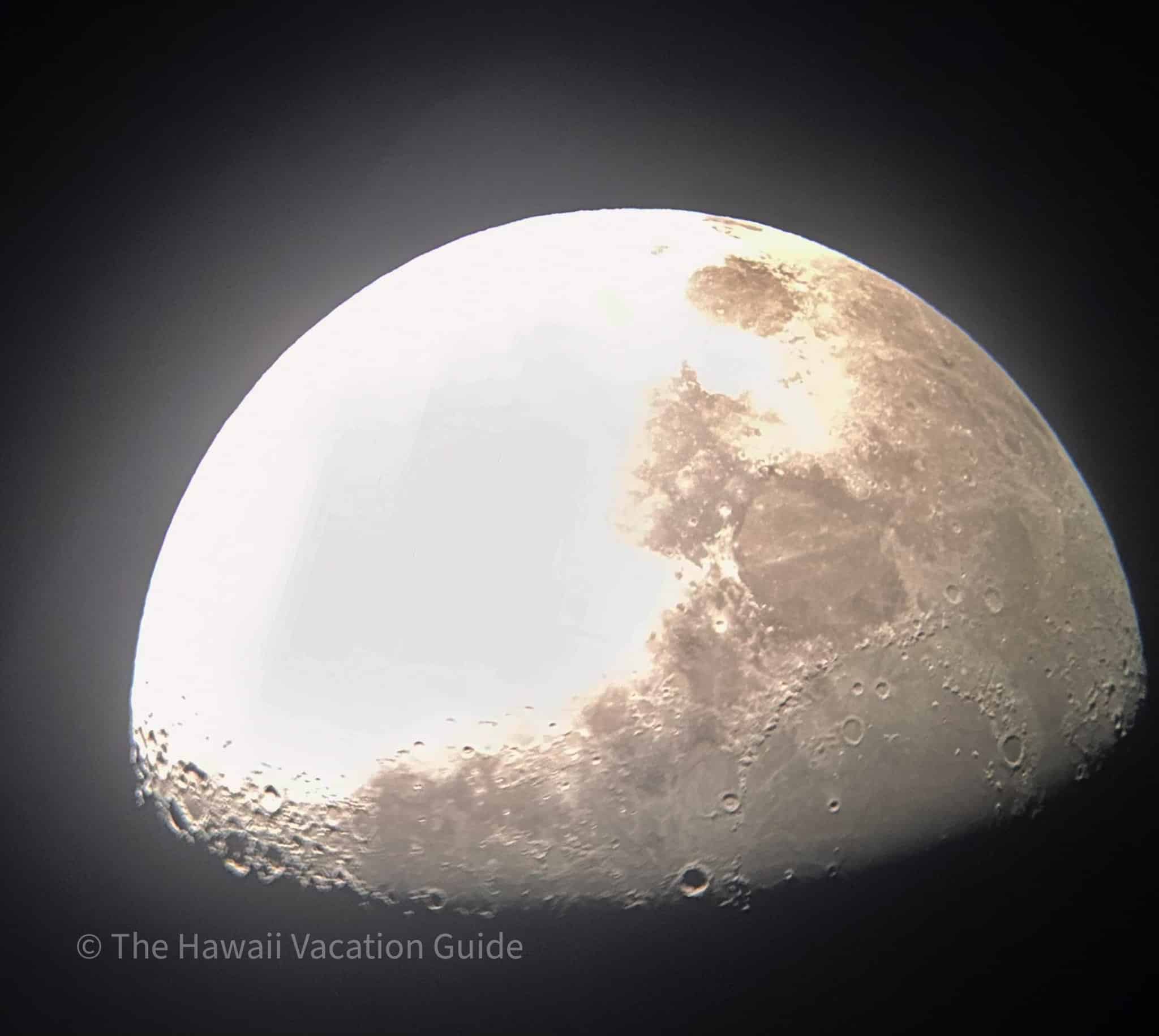
Disclosure: This post may contain affiliate links, meaning if you decide to make a purchase through my links we may earn a commission at no additional cost to you. Read about our affiliate policies here .
Stargazing atop one of the tallest mountains in the country is a once-in-a-lifetime experience and a must-do activity if you’re on the Big Island. Without any light or atmospheric pollution to distract you, you’ll be able to see the night sky filled with stars, galaxies, planets, and so much more.
However, getting to Mauna Kea can be a bit tricky, as it requires a long drive up to a high-altitude climate.
If you would like to do Mauna Kea stargazing during your trip, then you can either drive yourself or book an organized tour. To help you decide what’s best for your group, we’ll share the pros and cons of each so you can plan a memorable and stress-free trip stargazing experience.
Get the most out of your Big Island vacation Take a deep dive on the island with our Big Island Travel Guide , packed with everything you need to know for your trip! Let us help you find the best place to stay on the Big Island Save on your rental car with Discount Hawaii Car Rental , they’ve saved us thousands! To get to the top of Mauna Kea requires 4WD! Find even more great things to do on the Big Island .
What is Mauna Kea?
Mauna Kea is an inactive volcano on the Big Island. It’s the highest point in the entire state of Hawaii, with a peak that stands over 13,800 feet tall (making it a little over a hundred feet taller than Mauna Loa – one of the largest volcanoes on the planet).
Because of the high elevation, Mauna Kea is an excellent place for stargazing. With a dry, cloudless, and nearly pitch-black sky, Mauna Kea has the perfect conditions for astronomical observation. Not only is it open to visitors, but it’s also used by professionals and scientists, including NASA.
What are the Mauna Kea Observatories?
Perched on the summit of Mauna Kea sits the Mauna Kea Observatories. This 525-acre plot of land is home to 12 different observational facilities and 13 telescopes. The University of Hawaii operates two of them, while the others are governed by other agencies and countries.
As a visitor, you won’t be allowed to go inside the observatories or use the telescopes. The only exception to that is NOIRLab does a limited number of tours at noon to their Gemini North Telescope . You must drive yourself to the summit.
But if you make the trek up to the summit during the day, you might be able to see the astronomers at work. The domes will be open, and the telescopes will be swung into position!

Besides being on the summit, you also have the chance to check out the visitor’s center, The Onizuka Center for International Astronomy Visitor Information Station (VIS for short), which is located further down the slopes of the volcano.
Can You Visit Mauna Kea on Your Own?
Yes! Although many people choose to visit Mauna Kea with an organized tour, it’s possible to go on your own. However, there are some rules and regulations you’ll need to follow if you plan to drive yourself up the volcano.
The visitor center is open from 9 AM to 9 PM, although the road to the summit opens 30 minutes before sunrise and closes 30 minutes after sunset. You can visit anytime during operational hours, although many people like to come during sunrise or sunset for the view.
2-wheel-drive vehicles are not permitted past the visitor’s center, so be sure you go prepared! We’ll cover more on this below.
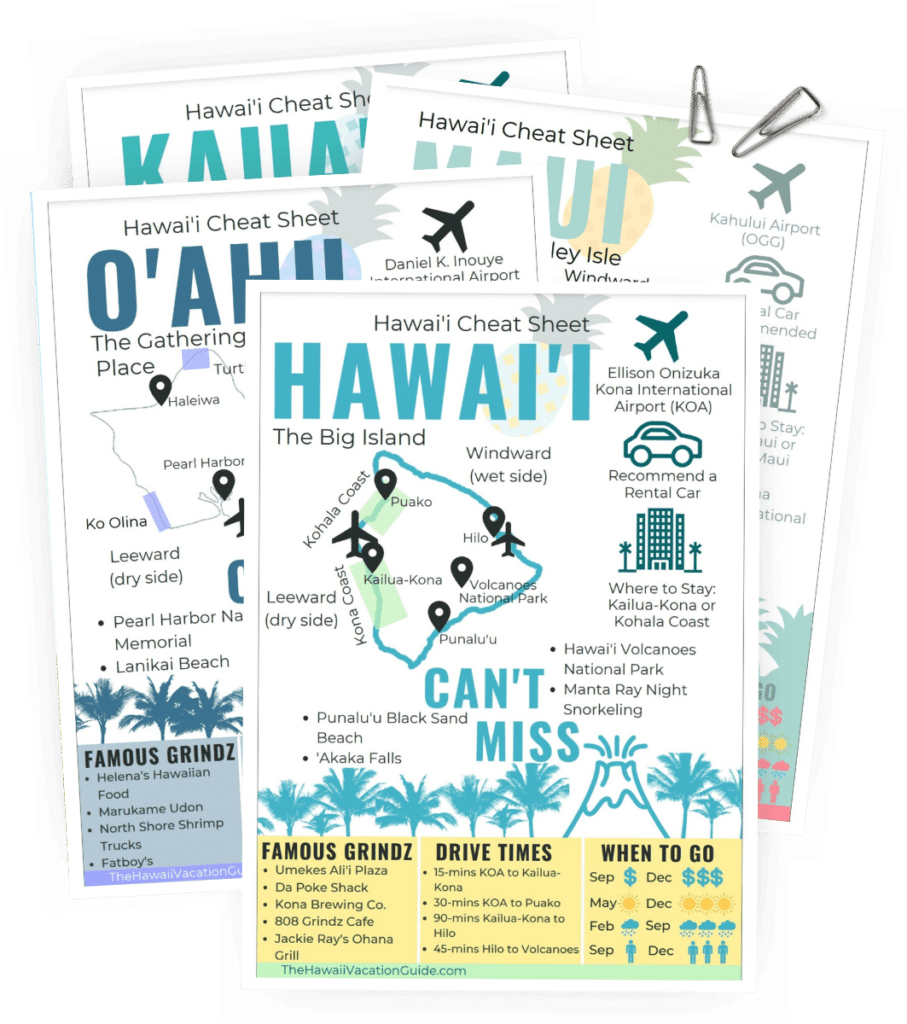
Free Download!
Hawaiian island cheat sheets.
Sign up & we’ll send you our island cheat sheets so you can get to know the islands like the back of your hand!
We’ll share 4 can’t-miss activities on each island, a map with the main sights in town, & famous local grindz (eats)!
where should we send your free Island Cheat Sheets?
By signing up, you agree to our Privacy Policy . We hate spam and promise to keep your email safe. Unsubscribe at any time.
Mauna Kea Stargazing: Visiting on Your Own
Organized tours are expensive and often take up an entire day. While it is great to have a knowledgeable guide with you, some people prefer to go stargazing on their own. If you are planning to head up to Mauna Kea without a tour, there are some things to keep in mind to make sure your trip goes as smoothly as possible.
Tips for Stargazing at Mauna Kea
Beware of altitude sickness.
As the tallest peak in Hawaii, the high altitude levels on Mauna Kea are no joke. In fact, the air at the summit contains 40% less oxygen than at sea level! If you aren’t adequately prepared, you may get Altitude Motion Sickness (AMS), which can cause headaches, drowsiness, nausea, and loss of balance among other symptoms.
To prevent getting sick, there are some safety precautions you should take:
- Spend at least 30 minutes adjusting to the altitude change at the Visitor Center (9,200 feet)
- Bring and drink lots of water to stay hydrated
- Don’t drink alcohol before or during your visit
- Don’t do too much strenuous activity at the top. You should save your oxygen!
- Avoid high altitudes if you are pregnant, under the age of 13, or have poor general health
Join the Stargazing Program
Once a month, the Mauna Kea Visitor Center hosts a free stargazing event. As a group, staff members will take you to a private stargazing location where you’ll be able to spend two hours viewing the night sky. They’ll have telescopes set up and can answer any question you may have.
To join, make sure to reserve your place online in advance. You can come a bit early to watch the sunset before returning to the visitor center to start your stargazing experience.
Rent the Right Vehicle
To reach the summit of Mauna Kea, you’ll need to have a 4WD vehicle. The 8-mile drive from the visitor center to the peak is on steep, bumpy terrain, which means it’s not suitable for 2WD cars. If you don’t have an off-roading vehicle, you’ll still be allowed to go to the visitor center, although venturing any further is strictly prohibited.
When renting a car, make sure the rental company allows its vehicles to be driven up Mauna Kea. Some companies have regulations that prohibit this, so double-check before you leave the airport or rental car center.
It’s also important that you have enough gas to make it up to the summit and back. While the drive is doable on ½ a tank, we highly recommend filling up before going to Mauna Kea. You will burn a lot of gas as you make the climb to the summit. There are no gas stations after Waimea, so plan accordingly if you’re driving yourself!

Check out our rental car recommendations before you book!
Be Respectful
Mauna Kea is a sacred place, and according to Hawaiian mythology, the summit is home to benevolent spirits and gods, including Poli‘ahu, the Goddess of Snow. Historically, Hawaiian law stated that only high-ranking nobility were allowed up to the peak.
While this has changed over time, it’s still vital that all visitors treat the volcano and the natural surroundings with respect. Make sure you stay on the road at all times and don’t pull over unless instructed.
Related reads: 9 Ways to Have an Authentic Hawaiian Experience The 6 Best Big Island Luaus by Location
Dress Warmly
As you might imagine, the top of Mauna Kea can be very cold. The average temperature at the peak is 32 degrees Fahrenheit (literally freezing!), although the wind chill can make it feel even colder.
For this reason, you’ll want to dress warmly. Make sure you have long pants, closed-toed shoes, and a warm jacket or sweater. You may also think about bringing thick socks, gloves, and a beanie, so be sure to add these to your Hawaii packing list !
Don’t Go Scuba Diving Before or After
Similar to flying, being at a high altitude can pose major risks for scuba divers. The decreased air pressure and build-up of nitrogen in the bloodstream can be extremely dangerous. If you want to go scuba diving after stargazing, you must wait at least 24 hours to adjust back to sea level.
The same applies to diving before your trip up the volcano. Because of the altitude change, you should also wait more than 24 hours to go up Mauna Kea if you’ve been scuba diving.
How to Stargaze at Mauna Kea On Your Own
Now that we’ve gotten the safety information out of the way, let’s walk through what you’ll need to do to have an amazing experience stargazing at Mauna Kea!
One important thing to note is that the road from the visitor center up to the summit is closed 30 minutes after sunset. Therefore, you won’t actually be doing any stargazing at the peak. While you can drive up there for the view (and the bragging rights), you will be doing all your stargazing around the visitor center at a lower elevation.
Arrive Ninety Minutes Before Sunset
As mentioned, the road up to the summit closes 30 minutes after sunset. You’ll need enough time to make the drive and acclimate to the altitude change if you’re planning on watching the sunset from the top.
Therefore, we recommend getting to the visitor center 90 minutes before the scheduled sunset. That gives you 30 minutes to acclimate at the visitor center and another 45 minutes to 1 hour to drive to the summit. If there isn’t traffic, you can usually make the drive in about 30 minutes, although it can be longer if you’re stuck behind a slow driver.
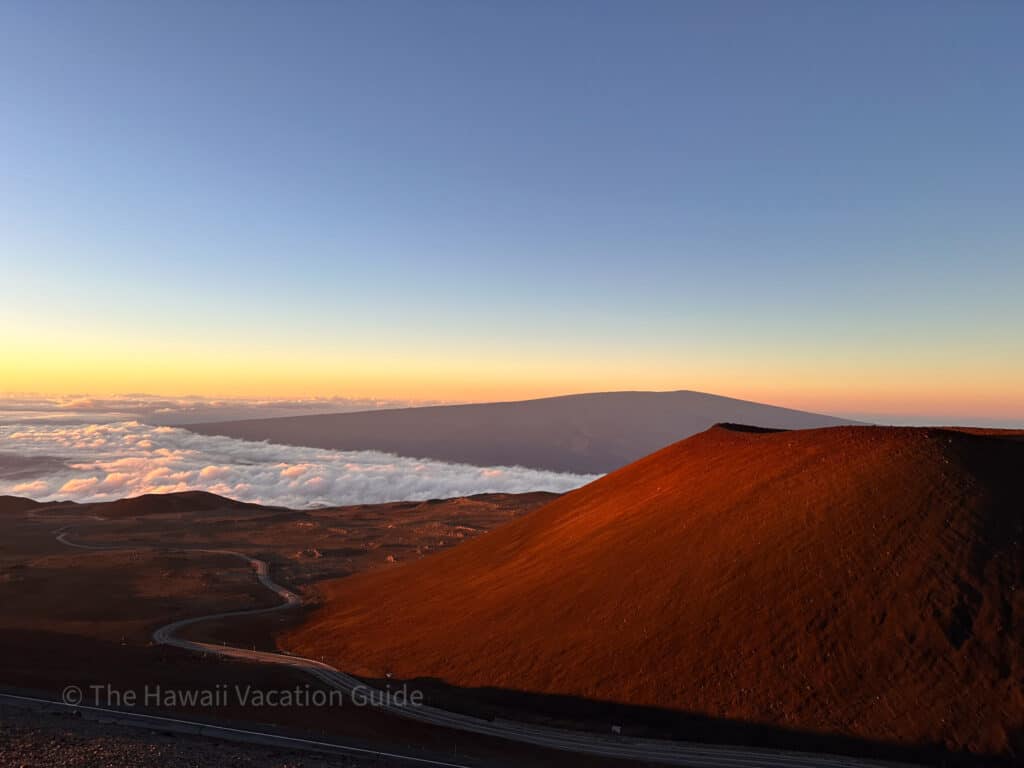
Give Yourself At Least 30 Minutes to Acclimate
We can’t stress this enough! Unless you want to spend your entire evening feeling sick and dizzy, It’s important to acclimate to the change in altitude. You don’t want to just drive straight from the beach up to the peak without stopping to adjust, as this can be extremely dangerous.
The visitor center is located 9,200 feet above sea level, so you need to stop here for at least 30 minutes before heading to the summit. However, the longer you have here, the better. Some visitors even spend several hours here just to make sure.
There’s a lot to see inside, including photos, diagrams, and models. You can also pick up a book or souvenir at the gift shop while you’re waiting!
Drive from the Visitor Center to Mauna Kea Summit
If you have a 4×4 vehicle with an allowance to go up Mauna Kea, then you can head to the summit before sundown. Remember that the road is long (8 miles) and very steep (~5,000 feet), so take your time.
Give yourself at least 45 minutes to an hour to go up the road from the visitor center. While the drive should take just 30 minutes, it will likely take longer due to the number of cars, slow drivers, etc.
If there are high winds, ice, or lots of snow, the road up to the summit might be closed. Before you leave, check the road conditions to see if it’s open to visitors.
Watch the Sunset
Once you’ve reached the peak, bundle up in your warm clothes and go out to watch the sunset. It’s a breathtaking sight to see it descend below the clouds. Make sure to bring your camera (and some sunglasses), as the colors are stunning from this high up.
Drive Back Down to the Visitors Center for Stargazing
Remember, you can only stay up at the peak for about 30 minutes after sunset. The road down to the visitor center can be quite dangerous in the dark, so you won’t be allowed to stay for too long.
But once you arrive back at the visitor center, it’s time to go stargazing!
Why Stargazing is Better at the Visitors Center
Despite what many people think, the visitor center is better than the summit for stargazing! That’s because it’s at a lower altitude, which means there’s more oxygen in the air. Getting less oxygen makes it harder to see the stars, even though you’re technically closer to them!
However, the summit is still the ideal place for astronomers. The telescopes they use aren’t affected by the lack of oxygen, which is why they’re situated at Mauna Kea’s peak, but many astronomers control the telescopes and view the images at lower elevations.
So, don’t be upset that you can’t stay on the summit after dark. The visitor center is still at a high enough elevation to make your stargazing trip a memorable one!
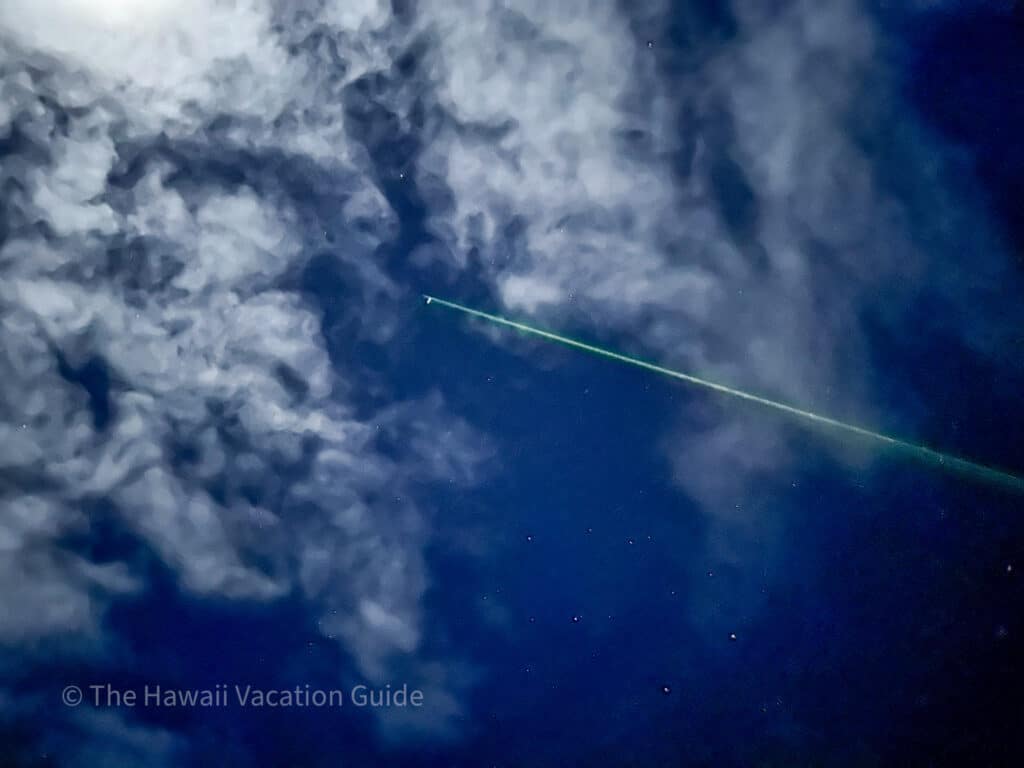
Find even more great things to do on the Big Island: 21 Incredible Things to Do on the Big Island 32 of the Best Things to Do in Hilo (+nearby) The 21 Best Things to do in Kona (+ tips to know before you go) 12 Epic Things to Do in Kona with Kids The 15 Best Things To Do In Waikoloa
The Best Mauna Kea Stargazing Tours
While a DIY drive-up Mauna Kea is doable, it might be easier to go with a tour group. Not to mention, it’s always nice to have a knowledgeable guide with you to answer any questions you may have and help you see even more.
We recommend a tour for stargazing if you’re hesitant about the drive. Driving up or down the mountain at night is difficult – the road is windy, and completely dark, and the change in altitude is significant. Thankfully, there are some great options available if you prefer to go on an organized stargazing tour.
Stargazing Tour with Photos
A lot of stargazing tours last the entire night (10 to 12 hours!), which may not fit your schedule if you’re short on time. However, this stargazing tour is only 2 hours long, so it’s perfect for those who have other activities planned.
The tour is led by James, an analog astronaut and professional astrophotographer. He uses a telescope and laser pointer to show you exactly where to look for the most breathtaking views of the night sky. He’ll also take professional photos of you with the starry backdrop so you can have a unique souvenir to remember your time on the volcano.
Because this tour doesn’t go up to the summit, it’s suitable for kids or those with health issues. And if the weather or stargazing conditions are bad, you’ll get a full refund or opportunity to move your tour to a later date.
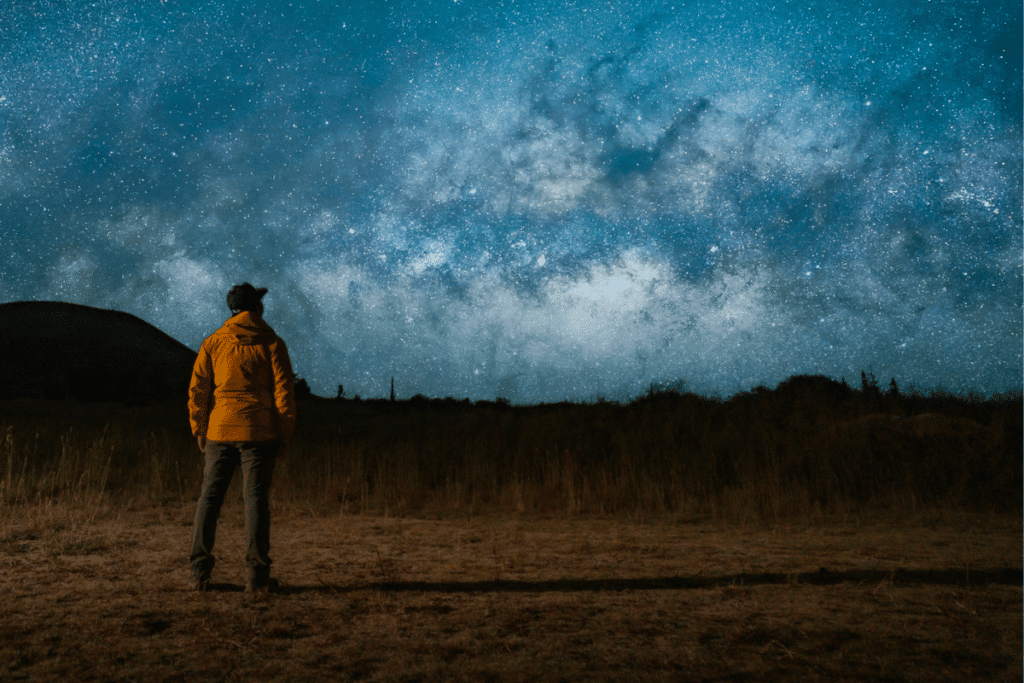
If you’re trying to get great photos throughout your vacation, check out our favorite photo spots .
Twilight Volcano and Stargazing Tour
This full-day tour allows you to experience the best of what the Big Island has to offer. You’ll start your morning with a coffee tasting at a local Kona coffee farm before heading to Punalu’u Black Sand Beach (one of the most unique beaches on the island!). From there, you’ll visit Hawaii Volcanos National Park, where you’ll see the Kilauea Iki Lookout, steam vents, and Halema’uma’u Crater.
After dinner at a local restaurant (which is included along with a picnic lunch), you’ll head up to Mauna Kea for an evening of stargazing.
Mauna Kea Summit Tour
If you’re staying in Hilo, this is one of the best stargazing tours you can join. They’ll pick you up at a central location and whisk you up the slopes of Mauna Kea for an unforgettable evening. After a warm picnic dinner, you’ll visit the summit for a spectacular sunset before heading back down to the stargazing spot.
Admire the different constellations and space objects through the telescope while sipping hot chocolate to stay warm. Your guides will also take photographs of the night sky that you’ll get after your tour!
Parkas and gloves are provided, which is a huge perk if you don’t want to pack yours from the mainland. However, stargazing is not guaranteed, as cancellations due to poor or cloudy conditions may occur. Refunds are not offered for unfavorable conditions.
Kohala Coast Stargazing
Getting up to Mauna Kea can be a time-consuming venture. However, there are closer stargazing spots you can visit that don’t require lengthy drives, heavy coats, or acclimatizing to the high altitude.
This stargazing experience takes place at the Westin Hapuna Beach Resort , which is just 45 minutes from Kailua-Kona. Even though it’s at sea level, you can still enjoy dramatic views of the night sky with their high-tech telescopes! We did this tour and saw the moon, Saturn, and tons of stars, so it’s definitely worth it if you don’t want to make the long journey to Mauna Kea.
We highly recommend this tour for kids as it only lasts for one hour. And if your little ones are under 5, they get to go for free! Honestly, we were a little hesitant about this tour but we all had a great time and learned so much. We took our kids and our parents with us, and it was great for all ages.
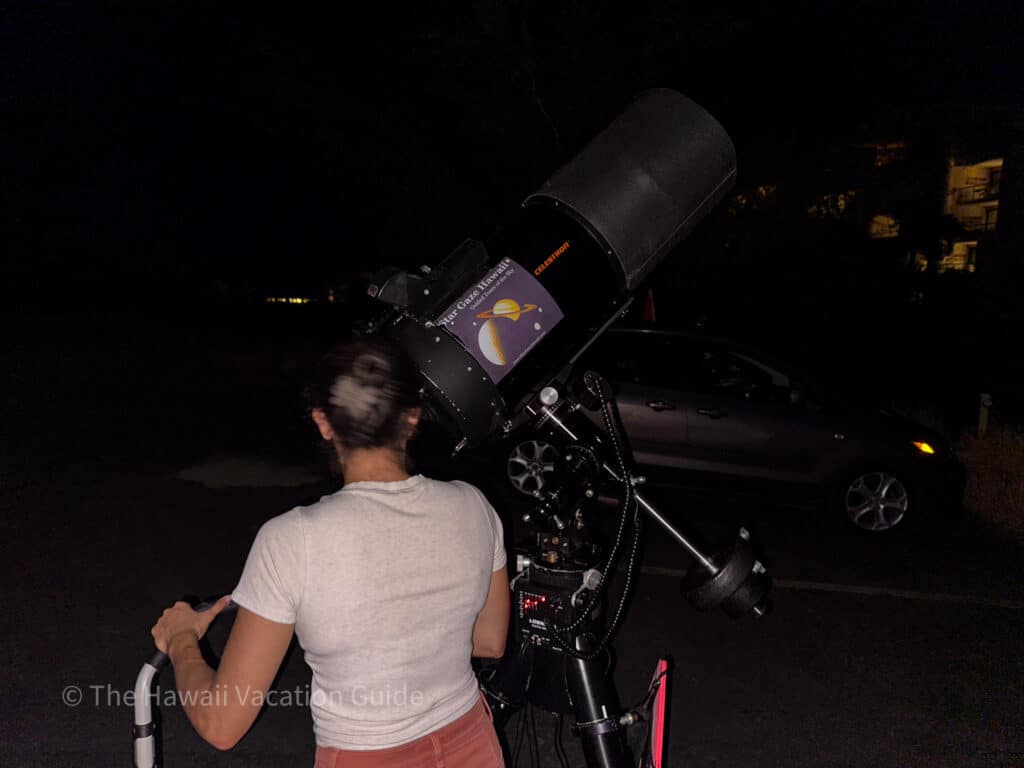
Check out more can’t miss Big Island tours and activities: Tried and Tested: The 5 Best Manta Ray Night Snorkel (or Dive) in Kona The 10 Best Big Island Farm Tours You Won’t Want to Miss The 9 Best Big Island Snorkeling Tours
The Easiest Big Island Trip Planning
We make planning a trip to the Big Island simple with our itinerary . This itinerary includes excursion days designed to take you on a planned route around the island to explore the best things to see and the best places to eat.
We are going to Oahu, Maui, and Big Island over the course of 21 days, so I have loved your itineraries–seriously they are a must-have lifeline for planning a trip to Hawaii! Kim S.
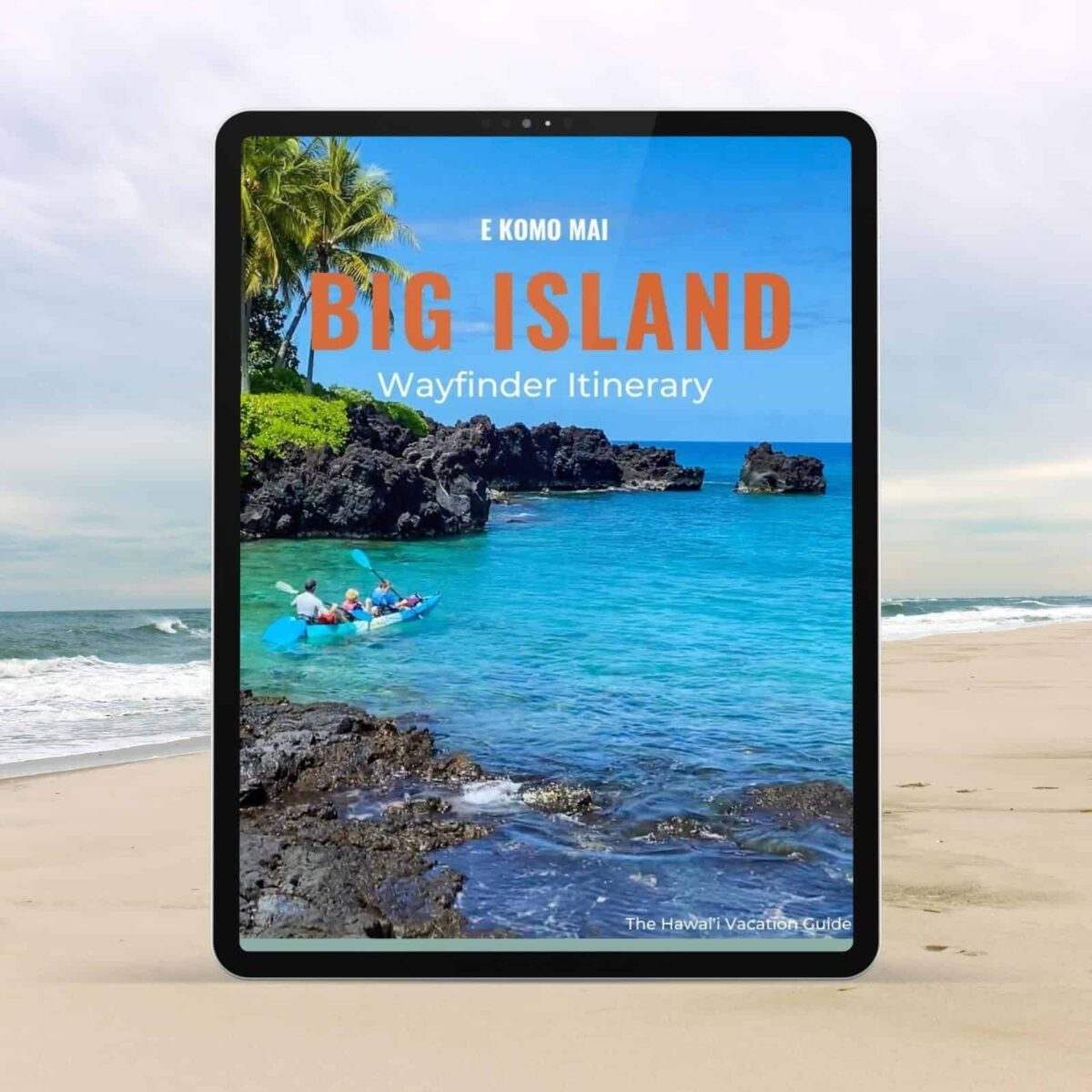
Big Island Wayfinder Itinerary
Get the big island itinerary.
The step-by-step itinerary takes you to all the best beaches, snorkeling spots, restaurants, and sights. You’ll get six carefully planned excursion days to help you see the can’t miss stops no matter how limited your time is.
Get all the details on our itinerary and download it for a memorable and easily planned trip to Hawai’i (Big Island).
Love this guide? Pin it and follow us for more!
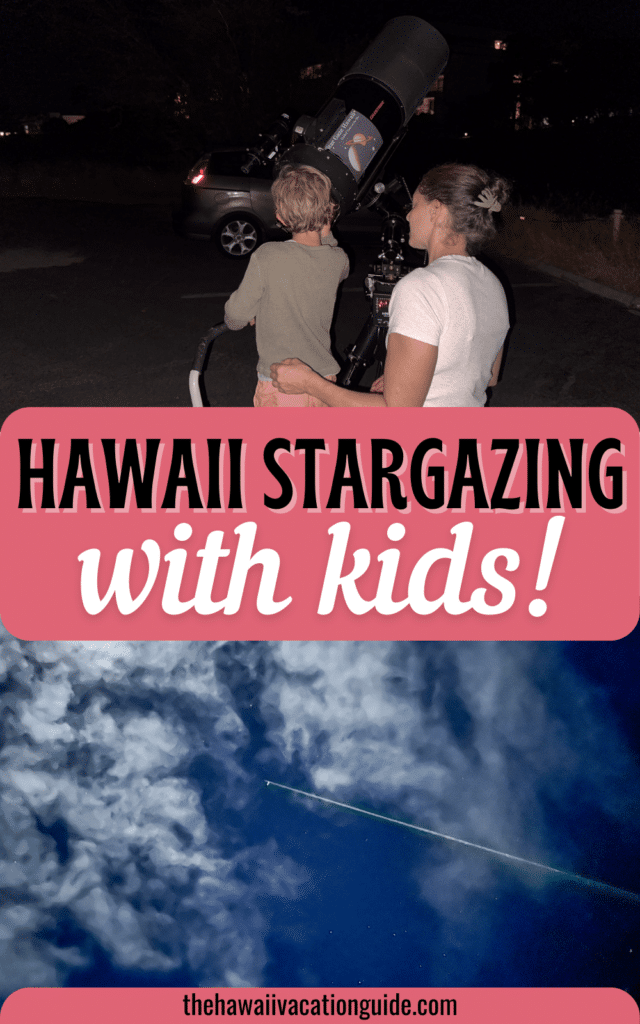
I'm the co-founder, with my husband Jordan, of The Hawaii Vacation Guide. We have lived on Maui and Oahu and continue to travel, experience, and learn about the Hawaiian Islands. We travel with our kids, Henry and Edith. I am a planner! I love to plan trips from the mainland and island-hopping adventures, excursion days, and everything in-between. I spend a lot of my time in Hawai'i on a SUP and my favorite time of year in Hawai'i is whale season!
Similar Posts
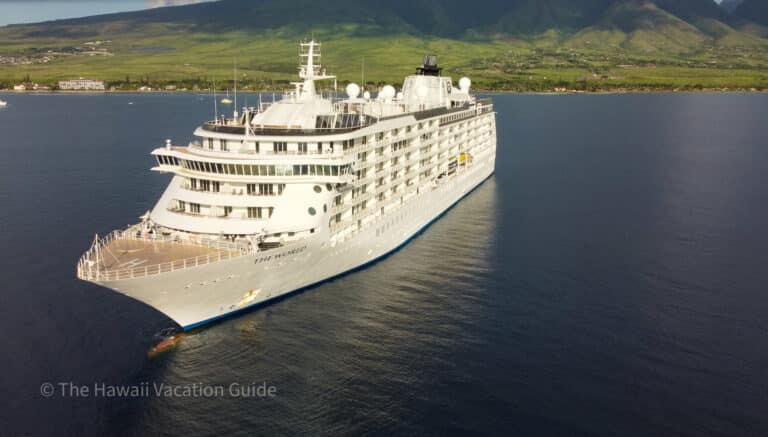
Hawaii Cruise Travel Guide
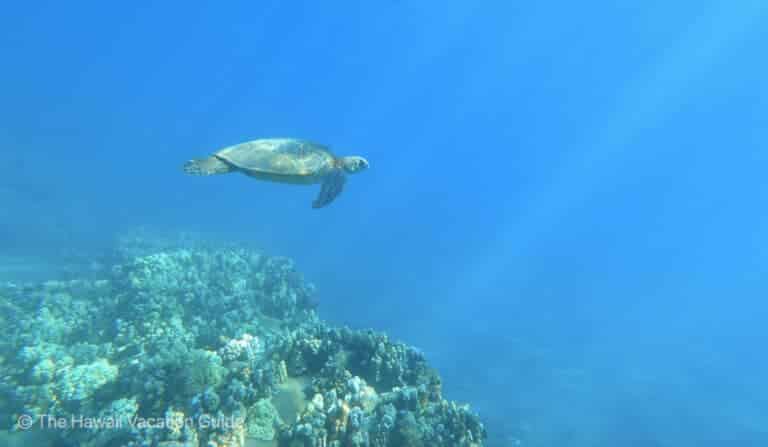
We Tested: The 9 Best Snorkeling Tours on Maui (+ discount!)
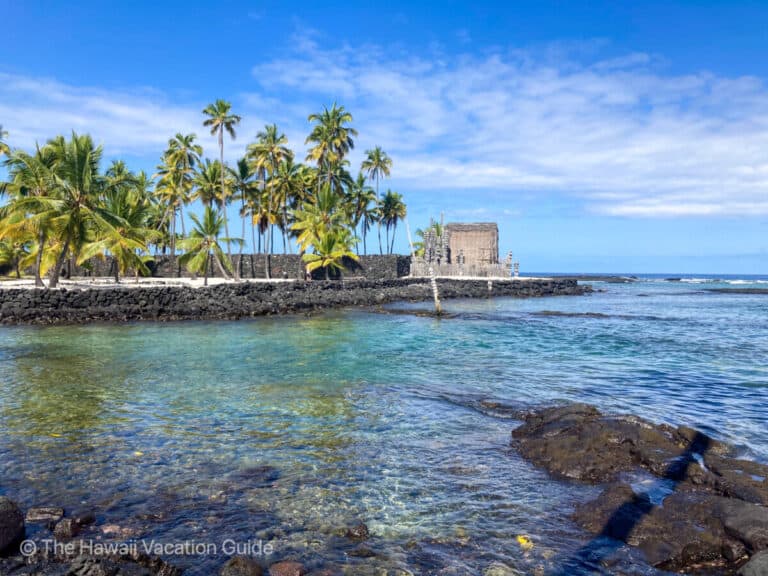
Where to Stay on the Big Island: best areas, hotels, and vacation rentals
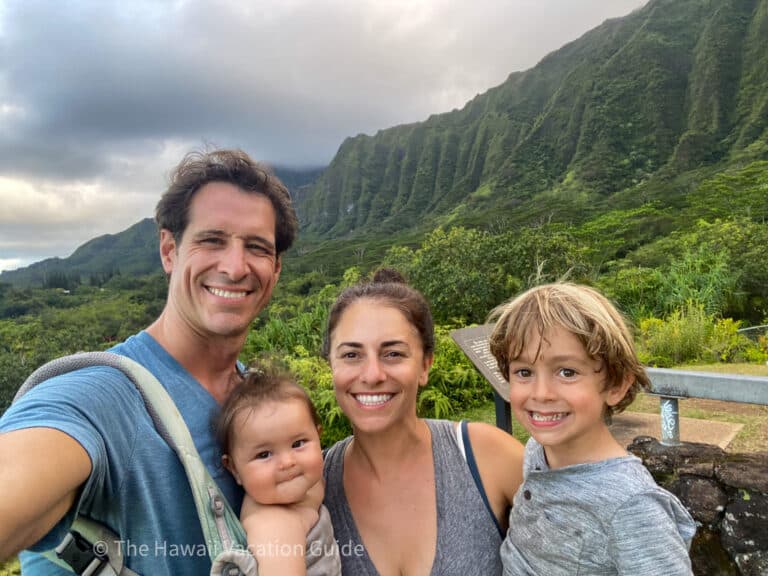
Best 40 Things to Do on Oahu, Hawaii (the list + map you need)
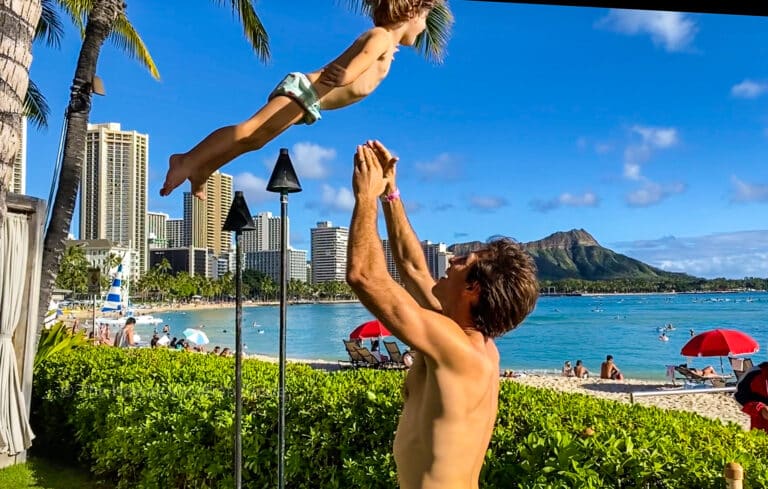
22 Best Family Resorts in Hawaii Everyone Will Love
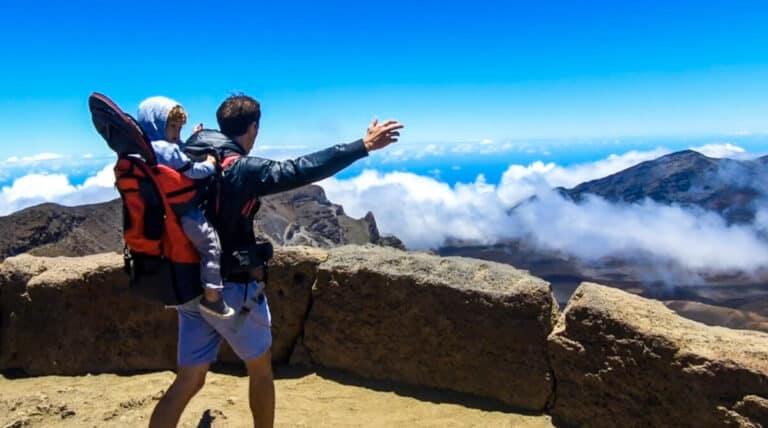
Haleakala Sunrise or Sunset: When Should You Go?
This is the most comprehensive Hawaii vacation planning resource on the internet!
TOP RESOURCES
- Join Our Newsletter
- Hawaii Itineraries
- Tours & Activities
- Top Travel Gear
- Discount Car Rentals
ISLAND GUIDES
- Planning A Trip To Hawaii
- Oahu Island Guide
- Maui Island Guide
- Hawai’i (Big Island) Guide
- Kauai Island Guide
Your use of the information provided in our Content, Itineraries, Site, and Services is for your informational purposes only and is subject to our Privacy Policy and Terms of Service. Your use of the information described in, your participation in activities presented in, and/or your engagement of any Travel Service Providers presented in our Content, Itineraries, Site, and/or Services may carry the risk of illness, bodily injury, disability, death, or property damage. You voluntarily and freely assume all risks and dangers that may occur pursuant to your access, use, purchase, or participation in any information, activity, good, or service described in our Content, Itineraries, Site, and Services or provided by any Travel Service Providers.
Don’t start planning without our cheat sheets
You’ll get:
- 4 can’t-miss activities on each island,
- a map with the main sights in town,
- and famous local grindz (eats)!
Review Cart
No products in the cart.
- Skip to global NPS navigation
- Skip to this park navigation
- Skip to the main content
- Skip to this park information section
- Skip to the footer section

Exiting nps.gov
Alerts in effect.
Last updated: August 22, 2024
Park footer
Contact info, mailing address:.
P.O. Box 52 Hawaii National Park, HI 96718
808 985-6011
Stay Connected
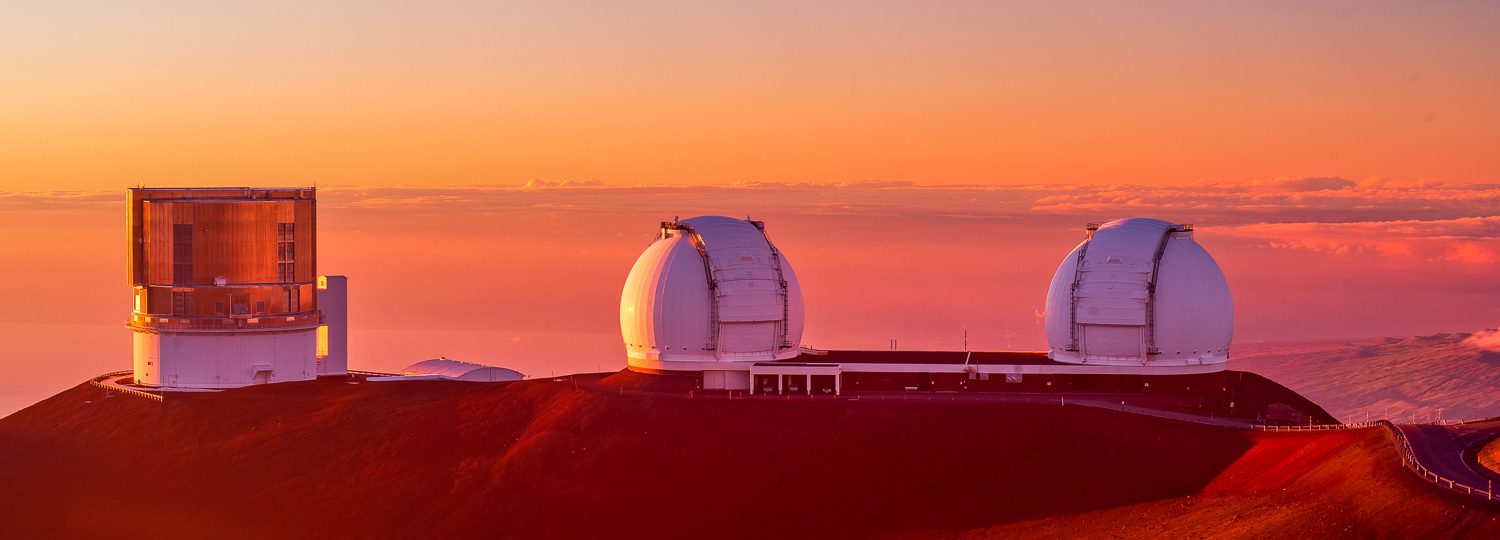
Visiting Mauna Kea Observatories
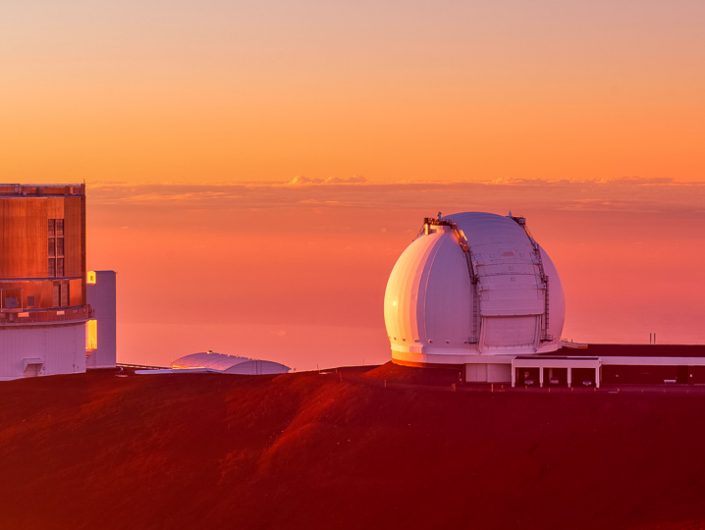
- SIGHTSEEING
An Introduction to the 13 Observatories on Mauna Kea
- ART & CULTURE
The Institute for Astronomy at the U of Hawaii
Tune in to hawaii public radio stargazer program.
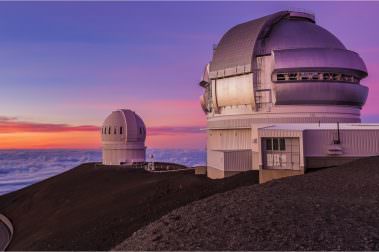
Go Stargazing at the top of Mauna Kea
Mauna Kea is the tallest sea mountain in the world, offering unprecedented views of the heavens above. So get ready for some stargazing like you’ve never seen before.
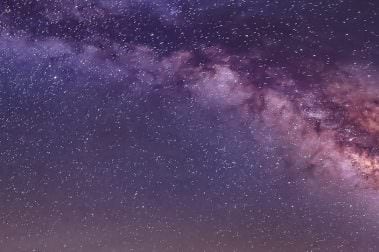
Polynesian Voyaging and Wayfinding
Polynesian Voyaging was a nearly lost art and science that has been revived in recent years
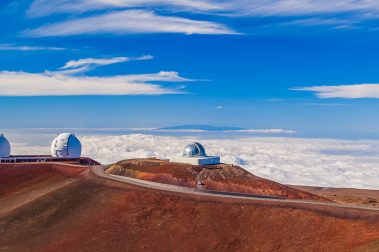
Mauna Kea Safety
Mauna Kea is the highest point in the state of Hawaii, that’s why it’s so important to stay safe and take every precaution before venturing up the summit.
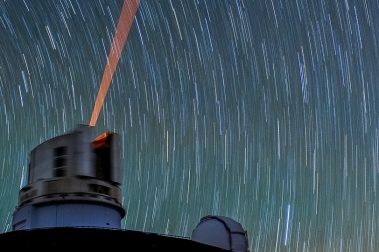
Mauna Kea: A Portal to the Universe
A highly regarded scientific site, Mauna Kea is one of the world’s most important astronomical research centers, allowing mankind a portal to see the Universe.
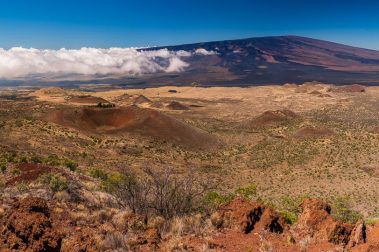
Learn about the Flora & Fauna on Mauna Kea
The alpine environment that lies below Mauna Kea is home to startlingly unique and ruggedly-beautiful flora and fauna that you can’t find anywhere else.

Hiking on Mauna Kea
There are two major hikes on Mauna Kea that attract most hikers: The full Mauna Kea Summit Trail and a shorter hike to Lake Waiau, both are amazing.
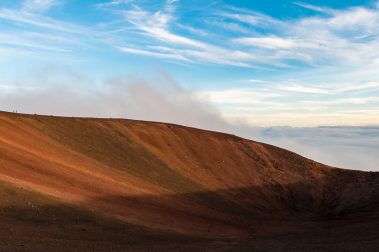
Hawaiian Culture and Connection to Mauna Kea
Also known as Mauna O Wakea, or Mountain of the Sky Father, Mauna Kea, the White Mountain is an important cultural site.
Mauna Kea Summit Adventures
Offering a well-rounded tour experience that takes you to the top of the Big Island’s greatest geologic feature, Mauna Kea Summit Adventures makes reaching the summit easy.
Dining Options for Mauna Kea Summit
For all its splendor, Mauna Kea is a remote location without basic amenities like food and gas, so you will want to fill up and stock up before you go.
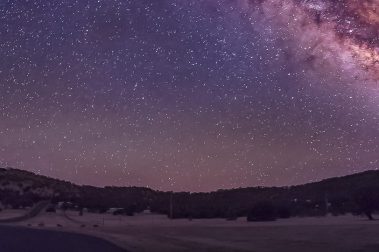
The Institute for Astronomy at the University of Hawaii is one of the world’s most influential and impactful astronomical research centers.
A brief, entertaining look at the world of astronomy, the Stargazer Radio Program is an excellent listen for astronomy buffs and lay people alike.
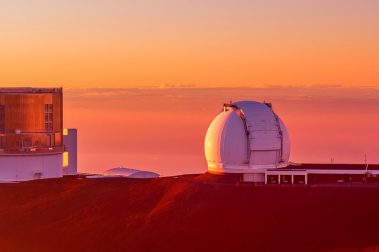
More than 11 countries, non-profit institutions, and scientific cooperatives have established, funded, and maintained 13 telescopes atop Mauna Kea.

- Newsletter Signup Email Address *
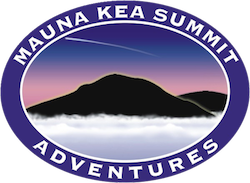
FREQUENTLY ASKED QUESTIONS
Observatories faqs.
- Chevron down Do we get a chance to go inside of any of the big telescopes on Mauna Kea?
No, not typically. During the time of our visit, astronomers are hard at work and cannot be interrupted. However, you will get to see the observatories as they open their domes and move into position. Some observatories are designed in a way that allows you to see much of the telescope from the outside when the dome is open.
- Chevron down Can we look through the big telescopes on Mauna Kea?
No, modern telescopes are not equipped for visual (eye) observing . Scientists are making digital images that can be frequently found on the internet. Check out the websites of the observatories to see these images.
HEALTH RISK FAQS
- Chevron down What are the Health Risk of Mauna Kea?
- Mauna Kea has 40% less oxygen than sea level and 40% less air pressure than sea level. This lack of vital oxygen can be a very serious problem for persons with HEART or LUNG disease.
- Persons that have been SCUBA diving in the last 24 hours run the risk of getting “The Bends” because of the decreased air pressure and the build up of nitrogen in their bodies.
- Pregnant women should not travel to Mauna Kea because of the decreased oxygen available for mother and child.
- We do not take children under 13 years of age to the summit because they have a much higher incidence of high altitude problems.
- In addition persons whom are obese ( Body mass index of 40.0 or over BMI calculator ) are not allowed to take this trip.
- Because of the long, bumpy road this trip might not be suitable for persons with back injury.
- Chevron down I have had heart/lung problems in the past and I would like to make the trip to Mauna Kea. What should I do?
To go on our tour you will need a letter from your personal Physician saying that a trip to Mauna Kea presents no special risk to you. Our reservationist can email a form for your physician to sign. A call to 911 on Mauna Kea will take about 2 hours to respond and even a minor incident will terminate the tour for everyone onboard.
- Chevron down What will the effect of the altitude be?
Depends mostly on your genetics but if you are reasonably healthy you will probably feel a bit lightheaded and giddy or sleepy. A few people will feel nothing and a few people will have a bit of minor distress perhaps requiring a bit of oxygen (carried onboard). Our guides are trained in the detection of hypoxia and they use pulse -ox meters to help with the diagnosis. There are no after effects and because our stay at high level is fairly brief there is not much likelihood of more serious problems developing. If you are tolerant of aspirin, a tablet every 4 hours for a day before and during may ward off the occasional headache.
TOUR DETAILS & GUIDES FAQS
- Chevron down What kinds of plants and animals might we see on a trip up Mauna kea?
When it comes to wildlife, the list is extensive. On our tours, we often encounter feral animals—domesticated species that have adapted to the wild—such as pigs, goats, sheep, donkeys, mongooses, and cats.
While less frequent, sightings of native Hawaiian wildlife are always special. Keep your eyes peeled for the Hawaiian Owl (Pueo), the Hoary Bat, the iconic Nene (Hawaiian goose), Palila, Apapane, I’o (Hawaiian hawk), and the rare Wekiu bug. We’re also fortunate to spot the seasonal Golden Plover.
In addition to wildlife, the native plants we pass on our journey are equally remarkable. Along the way, you’ll see Koa, Mamane, Naio (Sandalwood), Pukeawe, and Ohia trees, each contributing to Hawaii’s unique ecosystem.
- Chevron down Is the tour fully narrated? Microphone?
Yes, all of our tours are fully narrated in English. Each van is equipped with a high-quality PA system, ensuring clear and immersive storytelling throughout the journey. Our guides bring a wealth of knowledge and a deep passion for the islands, sharing insights in a way that is fun, educational, and tailored to the interests of each group.
- Chevron down Do you have Japanese speaking guides?
At this time, we do not have a Japanese speaking guide.
- Chevron down Are gratuities (tips) customary for the guides?
Many people do show their appreciation by tipping our hard working guides but it is not an obligation. $10-$20 per person is typical
EQUIPMENT & FOOD FAQS
- Chevron down What kind of vehicles do we travel in?
We operate custom-built “Micro Coach” vans designed specifically for comfort and safety. Each vehicle is equipped with 4×4 capabilities, air conditioning, a high-quality stereo, PA system, phone, first aid kit, oxygen, warm parkas, and a telescope for stargazing. Our vans comfortably seat up to 14 passengers and are the most reliable and comfortable 4×4 transit vehicles available, meeting all size restrictions and safety standards
- Chevron down What kind of telescopes do you use?
We proudly use state-of-the-art Celestron CPC 1100 telescopes, featuring Celestron’s advanced StarBright XL coatings, which deliver 10% more light throughput compared to standard telescopes. These computerized, automated scopes offer exceptional optics for a truly immersive stargazing experience.
- Chevron down What is your warm clothing like?
We supply heavy duty arctic weight parkas with hoods. They are made in men’s sizes S-XXL. We also provide cotton (one time use) gloves.
Parka Sizing
Our parkas are designed to fit generously. Below are the suggested weight ranges for each size:
- Small : Up to 145 lbs
- Medium : 140-175 lbs
- Large : 170-210 lbs
- XL : 200-260 lbs (Women requesting XL will need to provide height and weight for BMI verification)
- XXL : 250-310 lbs (Height and weight required for BMI verification)
Please note, for the safety of our guests, we are unable to accommodate individuals with a BMI over 40.0 on our high-altitude tours, as this poses a health risk.
If you need to adjust your parka size, or if you are requesting an XL or XXL, please provide your height and weight for verification. Feel free to contact us with any questions. Mahalo!
- Chevron down What does our food and drink consist of?
We’ve upgraded and simplified our meal offering to provide a delicious and satisfying experience. Our new 3-cheese garden lasagna is served hot in a stainless steel container, with a generous 16oz portion. Made with organic noodles that contain a small amount of egg, the lasagna is layered with fresh broccoli, zucchini, yellow squash, eggplant, mushrooms, basil, and a savory marinara sauce infused with garlic and onion. It’s topped with Jack, mozzarella, and Parmesan cheeses, and finished with an extra helping of marinara. Each meal is accompanied by a large, homemade brownie for dessert.
For those who prefer to bring their own meal, we offer a meal delete option.
Please note, drinks other than filtered water and paper cups are not provided with supper.
During the stargazing portion of the tour, we serve gourmet hot chocolate, teas, and coffee, along with a selection of sweet treats to complete the experience.
- Chevron down Why is there just one meal choice and why doesn’t it have meat?
Years of experience with various food vendors taught us that mistakes were inevitable. With our new simplified, single-item menu, we’ve solved that problem. We chose lasagna because it’s a popular, hearty dish that retains its heat well. It’s also vegetable-based, as meat can be harder to digest at higher altitudes. Our lasagna is carefully hand-prepared with fewer spices and selected vegetables to ensure it remains easy on the stomach as you ascend.
WEATHER FAQS
- Chevron down How often is the weather unfavorable on Mauna Kea?
The afternoon cloud buildup, typical of the Big Island, is usually no cause for concern. In fact, dense clouds below often indicate a strong tropical inversion layer, which can result in excellent visibility at the summit and mid-mountain regions of Mauna Kea.
Recent statistics show that Mauna Kea is clear enough for stargazing and scenic sunsets on average 300 nights a year, meaning about 20% of the year experiences unfavorable weather. Most of the severe weather comes during longer winter storms, which are generally predictable, though the exact arrival and departure times can be tricky.
Convective weather, caused by heat, is much harder to predict. It can pop up or dissipate unpredictably, but the good news is that the land and sky usually cool down in the late afternoon and early evening. This type of weather risk tends to be higher during the warmest months of July and August, but it can occur year-round. Warmer sea temperatures, such as during an El Niño event, can extend the convective weather season.
On average, about 1 in 10 of our tours are canceled due to weather or road closures. The months of August, September, January, February, and March are the least stable, accounting for 70% of weather-related cancellations each year.
- Chevron down How do you know if the weather conditions will be favorable?
We monitor current conditions using web cameras and weather forecasts, then apply our 40+ years of experience to make the daily Go/No-Go decision.
Can we be wrong? Of course, we can! Mauna Kea is a very high mountain, and like all high mountains, it comes with its share of unpredictable weather. Based on our trip logs, if we decide to go, your chances of encountering adverse weather are about 1 in 25.
We don’t cancel trips just because of a few high clouds or less-than-perfect stargazing conditions. However, we do cancel if we believe the summit is likely to be obscured, there is a low chance of a scenic experience, conditions may be dangerous, or the road is likely to be closed.
- Chevron down With all of the expertise and data available how can weather prediction fail?
Mountain weather, especially on Mauna Kea, is largely driven by heat. It’s not as simple as tracking a weather system moving across a map. You also have to predict when the sun or a warm ocean current might cause clouds to form. On the mainland, there are thousands of weather stations every few miles, continuously collecting and feeding data into powerful computers that analyze how these complex variables interact and generate forecasts.
The challenge is that heat is often unstable and doesn’t always behave as predicted. Over time, computers learn from these patterns and become more accurate. However, the forecasting models for Mauna Kea are limited by fewer data points and less historical experience.
Each morning, we review the forecasts and observe the actual conditions for a few hours to see if the predictions align with reality. If we believe the timing or intensity is off, we rely on our years of experience to make a decision. We’ve had great success with this approach, often achieving better accuracy than the official forecasts.
With time, the forecasting models will improve, but mountain weather will always remain one of the most difficult to predict.
- Chevron down Has climate change been observed on Mauna Kea? How has it been manifested so far?
In our experience, the effects of climate change have become quite clear on Mauna Kea. Over the last 30 years, snowfall—the primary form of precipitation on the mountain—has decreased dramatically. Rain at the summit, once almost unheard of, is now more common. Winter storms often last for days, but instead of accumulating snow, much of it ends up being rained away.
Daytime highs above 12°C (54°F), once rare, are now common, even in winter. Clear nights are also a bit less frequent, as daytime heating takes longer to dissipate. Lake Waiau, a glacial tarn, has nearly dried up for the first time in recorded history. Permafrost, once visible in road cuts, has vanished, and skiing conditions that used to last for months now only last for hours.
All of this has made weather prediction more complicated and less reliable.
- Chevron down How will I know if my tour is going up or cancelled ie. Go/NoGo?
We make the final decision each day 1 hour and 15 minutes before our Kailua-Kona pick-up. Our reservationists can provide you with the exact time. If the tour is canceled, we will attempt to reach everyone by calling their hotel room or cell phone.
You don’t need to stay in your hotel room waiting for the call—go out and enjoy yourself! However, if you’re not available at that time, we recommend calling us at (808) 322-2366 to reconfirm your tour. Since we strive to make the most accurate weather decisions, we almost never cancel a trip early. Ultimately, it’s your responsibility to contact us to reconfirm your tour status.
- Chevron down What happens if the weather is adverse on our trip?
(MKSA) cannot guarantee perfect weather—no tour company in the world can. However, we promise to stay well-informed and will cancel tours if we believe the summit is likely to be obscured or if scenic value is compromised. Our primary goal is to provide a safe, scenic, and informative experience.
Refund Policy:
- If we cancel the tour before pick-up , you will receive a full refund or the option to reschedule, depending on availability.
- If the tour proceeds but encounters cloudy conditions , no refunds will be issued. Mountain weather can change rapidly, and while we make every effort to choose ideal conditions, we cannot guarantee clear skies. The final decision to proceed or cancel is made on the day of the tour.
Please note: There will be no refunds due to weather.
- Chevron down What happens should the mountain cloud up after the Go/NoGo decision has been made or enroute?
This is actually a fairly common occurrence. As long as the road remains open, we will continue the tour as planned. Despite any cloud cover during the warmer afternoon hours, Mauna Kea has a strong tendency to clear up, especially as the day progresses. In fact, many of our most breathtaking sunsets have followed dramatic clearing of afternoon clouds. Of course, there are times when it may not clear, but we always base our decision on the most likely scenario for the best possible experience.
RESERVATIONS FAQS
- Chevron down How can I make reservations for my Mauna Kea Summit Adventure?
- If you are in the USA please just call our toll free phone at 888-322-2366 a week or two in advance is usually sufficient.
- If you are overseas you can call our office at 011-808-322-2366 or submit an online reservation request .
- Chevron down How far out in advance do I need to make my reservation?
Almost 100% of our trips are sold out. If your exact day is important you should reserve at least 1 month prior. For Christmas maybe 3 months prior.
- If you are overseas you can call our office at 01-808-322-2366 or submit an online reservation request .
Almost 100% of our trips are sold out. If your exact day is important you should reserve at least 1 month prior. For Christmas maybe 3 months prior. Unsecured reservations are taken off the books approximately 1 week prior to the trip.
CANCELLATIONS FAQS
- Chevron down What is your cancellation policy?
We understand that events occur that might change your plans. However, our capacity is limited by State permit and all of our tours are fully booked. Please help us to serve our eager customers by giving ample warning when your plans change. Please make your cancellations directly with our reservation office 808-322-2366 .
Cancellation Policy: (# of Passengers) 1-4: 24 hours 5-7: 48 hours 8-10: 1 week 11+: 2 weeks
Within 24 hours no refunds , no exceptions. Note if you are sick or in some other way detained please call us as soon as you think you might not make the trip. We might be able to place someone in your vacant seat and save you the expense. If you are unsure about finding your pick-up point or lost, please call our reservation office at 808-322-2366 ASAP.
CONSUMPTION FEE FAQS
- Chevron down Consumption Fee Policy
At Mauna Kea Summit Adventures, we are committed to providing a safe and enjoyable experience for all guests. However, due to the unpredictable nature of road conditions on Mauna Kea, there may be times when a tour cannot be completed in its entirety. In such cases, a Consumption Fee will apply.
When is the Consumption Fee Applied?
If unforeseen circumstances, such as road closures or safety concerns, prevent the tour from proceeding beyond the Maunakea Visitor Center, we will issue a full refund minus a Consumption Fee. This fee covers the costs associated with consumables and services already provided, such as guide wages, fuel, food, and permit fees.
Note: This fee is unrelated to weather conditions. Our tours operate regardless of weather, and refunds are not issued for changes in weather or visibility. The Consumption Fee applies strictly to situations involving road closures or other unforeseen events that halt the tour.
Consumption Fee Rates
$30 per person for guests who received the lasagna meal option.
$21 per person for guests who did not receive a meal.
Why Do We Charge a Consumption Fee?
This policy ensures we can provide a fair refund to our customers while retaining the costs incurred for consumables and partially rendered services. It also reflects the dramatic increase in road closures by Maunakea authorities over the past five years, which has affected all tour operators’ ability to complete tours.

IMAGES
COMMENTS
It was an amazing experience to get to Mauna Kea with this tour. The tour guide was friendly and very knowledgeable and knew a lot about the island and its history. When we got to the visitor center, the meal was nice. Seeing the observatories and being on the summit at 13,803' was a good experience. Stargazing, when it got dark, was very ...
The Mauna Loa Observatory is a research facility for atmospheric and climate monitoring, but it is not an astronomical observatory. Due to the COVID pandemic and volcanic eruption, the observatory is closed to the public and not giving tours until further notice.
The observatory is on Mauna Kea. The other mountain south of Mauna Kea is Mauna Loa. From the Saddle Road, which goes from the eastern side of Hawaii to the western side of the island, there is a road up to Mauna Kea. Along the road there are all kinds av warning signs, but with a good car there will be no problems reaching the top of the mountain.
MaunaKea Stargazing Tours. Tours going up Mauna Kea have several advantages over planning a visit yourself. ... Explore remote Mars-like locations on Mauna Kea or Mauna Loa for a unique stargazing experience unlike any other. ... The Kama'āina Observatory Experience is a free monthly community event that provides local residents with an ...
A. While driving up Saddle Road you'll have panoramic views of Mauna Kea and Mauna Loa. Along the road you'll see black lava rock formed by Mauna Loa's eruptions in the last two hundred years. From the Mauna Kea Access Road you'll see many volcanic cones that once spewed lava. You will also get to watch the sunset over these volcanic slopes.
When you reach the summit, enjoy views of the sunset, Mauna Loa, the Haleakala volcano on Maui, and other landmarks. Then drive down to the Mauna Kea Visitor Information Station at 9,000 feet (2,743 meters), home to more than a dozen international observatories that draw scientists from around the world.
Extending from sea level to the summit of Mauna Loa at 13,677 feet, the park encompasses the summits of two of the world's most active volcanoes - Kīlauea and Mauna Loa. The main feature of Haleakala National Park on Maui is the Haleakala Volcano, which rises 10,000 ft above sea level and has a spectacular crater at the summit.
Learn about the research and measurements at the Mauna Loa Observatory, a remote facility on the slopes of a volcano. Tours are by appointment only and require advance notice and transportation arrangements.
Travel on a road built through lava flows in a Martian-like landsacpe as you explore the northern flank of the largest volcano on earth, Mauna Loa. Take in the sights of from the Mauna Loa Observatory which has been recording atmospheric changes since the 1950's and boasts the longest record of direct measurements of CO2 in the atmosphere.
Mauna Loa Observatory is a premier atmospheric research facility that has been continuously monitoring and collecting data related to atmospheric change since the 1950's. The observatory is located on the north flank of Mauna Loa Volcano, Hawaii, and is inaccessible by vehicle and without power after the 2022 eruption.
Mauna Kea Summit Sunset and Stargazing Tour Mauna Kea Stargazing Experience + Photos Best Mauna Kea Summit Tour (Free sunset and star photo!) Best Value Tour. Best Family Tour. Best Full Day Tour. Departure: Hotel pickup and drop-off available: Mauna Kea Forest Reserve , 44-5400 Daniel K. Inouye Hwy, Waimea: Variety Available: Start: 4:00 PM: 9 ...
Enjoy a sunset and stargazing experience like no other on this small-group trip to Mauna Kea—the highest point in the Hawaiian islands. Following afternoon pickup, travel in a 4x4 van to the summit—you can change into a warm jacket and pair of gloves, and sip a hot beverage, as the sun starts to set. Then, learn why so many research telescopes are located here during a brilliant celestial ...
The Mauna Kea Summit and Observatory is a top destination for stargazing. On Hawaii's tallest mountain at 13,796 feet (4,138 meters), the observatory information center is a highlight of many visitors' trips to the Big Island of Hawaii.
My husband Jordan (I'm in the Jeep) was loving the sunrise at the summit of Mauna Kea and seeing the observatory closing up for the night. Besides being on the summit, you also have the chance to check out the visitor's center, The Onizuka Center for International Astronomy Visitor Information Station (VIS for short), which is located further down the slopes of the volcano.
This tour does not go all the way up to the summit of Mauna Kea, so your issues with altitude will be much less. We only go up to about 7000ʻ with the summit at 13,000. We encourage guests to be properly hydrated which reduces altititude sickness. Consult with your doctor before doing any activities you may be unsure of.
Mauna Kea: Stellar Explorer Tour from Hilo. ... who have written articles for well-known magazines and worked at world-class observatories for decades. The telescopes are a true purist way to view the night sky. ... encompasses the summit of two of the world's most active volcanoes and extends from sea level up to the summit of Mauna Loa at ...
2. Mauna Loa Summit Cabin via ʻĀinapō Trail: Access and Location: Mauna Loa Summit Cabin is situated along the Mauna Loa Trail, reachable by the ʻĀinapō Trail and Kapāpala Ranch. Two permits and gate access are required for this hike: 1. The National Park Service manages the Mauna Loa Cabin at 13,250 feet (4039 m).
Yes, you can see Mauna Loa from Kona. Kona is located on the western coast of Hawaii Island (the Big Island), and Mauna Loa comprises more than 50% of this island, mainly the southern and central areas. You may also see the Mauna Loa lava flow from Kona, depending on the conditions and how active the volcano is.
Visiting Mauna Kea ObservatoriesAtop the island's highest mountain, leading scientists from around the world have been conducting crucial research into the stars. Mauna Kea is crowned with multinational research facilities and observatories, studying the origins of the universe, and tracking unknown objects in the night sky. On a still awe-inspiring, but smaller scale, the Mauna Kea ...
At Mauna Kea Summit Adventures, we are committed to providing a safe and enjoyable experience for all guests. However, due to the unpredictable nature of road conditions on Mauna Kea, there may be times when a tour cannot be completed in its entirety. In such cases, a Consumption Fee will apply. When is the Consumption Fee Applied?